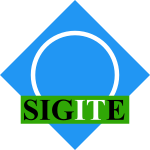Tag #human-computer
429 papers:
 EDM-2019-HanWJZZ #framework #hybrid
EDM-2019-HanWJZZ #framework #hybrid- A Human-Machine Hybrid Peer Grading Framework for SPOCs (YH, WW0, SJ, LZ, HZ0).
 FDG-2018-JacobM
FDG-2018-JacobM - Creative arcs in improvised human-computer embodied performances (MJ, BM), p. 6.
 CASE-2018-SabattiniVFCMLV #adaptation #approach #evaluation
CASE-2018-SabattiniVFCMLV #adaptation #approach #evaluation- Methodological Approach for the Evaluation of an Adaptive and Assistive Human-Machine System (LS, VV, CF, JNC, AM, FL, BVH), pp. 57–62.
 CIKM-2017-ZhuangLZF #hybrid #knowledge base #named #scalability
CIKM-2017-ZhuangLZF #hybrid #knowledge base #named #scalability- Hike: A Hybrid Human-Machine Method for Entity Alignment in Large-Scale Knowledge Bases (YZ, GL0, ZZ, JF), pp. 1917–1926.
 CASE-2017-SabattiniVCMF #approach #design
CASE-2017-SabattiniVCMF #approach #design- Methodological approach for the design of a complex inclusive human-machine system (LS, VV, JNC, AM, CF), pp. 145–150.
 ICPC-2016-KothariTM #control flow #question
ICPC-2016-KothariTM #control flow #question- Human-machine resolution of Invisible Control Flow? (SK, AT, JM), pp. 1–4.
 VS-Games-2016-KerousL #interactive #interface #overview
VS-Games-2016-KerousL #interactive #interface #overview- Brain-Computer Interfaces - A Survey on Interactive Virtual Environments (BK, FL), pp. 1–4.
 CIKM-2016-YanSZW #chat #online #quote #towards
CIKM-2016-YanSZW #chat #online #quote #towards- “Shall I Be Your Chat Companion?”: Towards an Online Human-Computer Conversation System (RY, YS, XZ, HW0), pp. 649–658.
 ICPR-2016-MontenegroA #artificial reality #estimation #using
ICPR-2016-MontenegroA #artificial reality #estimation #using- Gaze estimation using EEG signals for HCI in augmented and virtual reality headsets (JMFM, VA), pp. 1159–1164.
 VS-Games-2015-VourvopoulosLC #case study #experience #game studies #interface
VS-Games-2015-VourvopoulosLC #case study #experience #game studies #interface- The Effect of Prior Gaming Experience in Motor Imagery Training for Brain-Computer Interfaces: A Pilot Study (AV, FL, MCC), pp. 1–8.
 CHI-2015-0001GH #challenge #design #framework
CHI-2015-0001GH #challenge #design #framework- Bridging the Theory-Practice Gap: Lessons and Challenges of Applying the Attachment Framework for Sustainable HCI Design (CR, SG, EMH), pp. 1305–1314.
 CHI-2015-AsthanaSG #analysis #assessment
CHI-2015-AsthanaSG #analysis #assessment- Survival Analysis: Objective assessment of Wait Time in HCI (SA, PS, PG), pp. 367–376.
 CHI-2015-BachourWFHRM #game studies #online #people #standard
CHI-2015-BachourWFHRM #game studies #online #people #standard- Provenance for the People: An HCI Perspective on the W3C PROV Standard through an Online Game (KB, RW, MF, TDH, TR, LM), pp. 2437–2446.
 CHI-2015-BerardR #assessment #learning #similarity #towards
CHI-2015-BerardR #assessment #learning #similarity #towards- The Transfer of Learning as HCI Similarity: Towards an Objective Assessment of the Sensory-Motor Basis of Naturalness (FB, ARC), pp. 1315–1324.
 CHI-2015-ChilanaKW #case study #design #research
CHI-2015-ChilanaKW #case study #design #research- From User-Centered to Adoption-Centered Design: A Case Study of an HCI Research Innovation Becoming a Product (PKC, AJK, JOW), pp. 1749–1758.
 CHI-2015-DesjardinsWO #research
CHI-2015-DesjardinsWO #research- Investigating Genres and Perspectives in HCI Research on the Home (AD, RW, WO), pp. 3073–3082.
 CHI-2015-EntwistleRVBA #framework #research
CHI-2015-EntwistleRVBA #framework #research- Beyond the Individual: The Contextual Wheel of Practice as a Research Framework for Sustainable HCI (JME, MKR, NV, RSB, MSA), pp. 1125–1134.
 CHI-2015-GiaccardiK #approach #experience
CHI-2015-GiaccardiK #approach #experience- Foundations of Materials Experience: An Approach for HCI (EG, EK), pp. 2447–2456.
 CHI-2015-HardingKDR #trust
CHI-2015-HardingKDR #trust- HCI, Civic Engagement & Trust (MH, BK, ND, MR), pp. 2833–2842.
 CHI-2015-MaiorPSW #reliability #using
CHI-2015-MaiorPSW #reliability #using- Examining the Reliability of Using fNIRS in Realistic HCI Settings for Spatial and Verbal Tasks (HAM, MP, SCS, MLW), pp. 3039–3042.
 CHI-2015-MunteanuMMROV #interactive #requirements
CHI-2015-MunteanuMMROV #interactive #requirements- Situational Ethics: Re-thinking Approaches to Formal Ethics Requirements for Human-Computer Interaction (CM, HM, WM, MR, SO, JV), pp. 105–114.
 CHI-2015-PanS #question #what
CHI-2015-PanS #question #what- What if HCI Becomes a Fashion Driven Discipline? (YP, ES), pp. 2565–2568.
 CHI-2015-PerrierDDAKUJ #communication #hybrid #women
CHI-2015-PerrierDDAKUJ #communication #hybrid #women- Engaging Pregnant Women in Kenya with a Hybrid Computer-Human SMS Communication System (TP, ND, BD, RJA, JK, JU, GJS), pp. 1429–1438.
 CHI-2015-PierceSHJGD #design
CHI-2015-PierceSHJGD #design- Expanding and Refining Design and Criticality in HCI (JP, PS, TH, TJ, WWG, CFD), pp. 2083–2092.
 DUXU-DD-2015-BarrosSRTBS #approach #interface #usability
DUXU-DD-2015-BarrosSRTBS #approach #interface #usability- A Usability Study of a Brain-Computer Interface Apparatus: An Ergonomic Approach (RQB, GS, CR, RT, MQB, MMS), pp. 224–236.
 DUXU-DD-2015-ChuanSA #evaluation #gesture #heuristic #interactive #usability
DUXU-DD-2015-ChuanSA #evaluation #gesture #heuristic #interactive #usability- Usability Heuristics for Heuristic Evaluation of Gestural Interaction in HCI (NKC, AS, WFWA), pp. 138–148.
 DUXU-DD-2015-Fernandez #analysis #health #interactive
DUXU-DD-2015-Fernandez #analysis #health #interactive- Interactive Digital Storytelling and HCI Techniques Applied for Edutainment in Interactive Health Projects: Analysis of Two USC’s Labyrinth Projects (JIMF), pp. 621–633.
 DUXU-DD-2015-GalaboN #design pattern #experience #user interface
DUXU-DD-2015-GalaboN #design pattern #experience #user interface- A Posture HCI Design Pattern for Television Commerce Based on User Experience (RJG, CdSSN), pp. 191–203.
 DUXU-DD-2015-HeidtKPR #community
DUXU-DD-2015-HeidtKPR #community- HCI and the Community of Non-users (MH, KK, LP, PR), pp. 44–52.
 DUXU-DD-2015-HertleinHVSW #usability #what
DUXU-DD-2015-HertleinHVSW #usability #what- Practice What We Preach — Checking the Usability of HCI Conference Websites (FH, BH, MV, TS, CW), pp. 295–305.
 DUXU-DD-2015-RenziF #delphi
DUXU-DD-2015-RenziF #delphi- Delphi Method to Explore Future Scenario Possibilities on Technology and HCI (ABR, SFdF), pp. 644–653.
 DUXU-IXD-2015-DesouzartF #interactive
DUXU-IXD-2015-DesouzartF #interactive- Human-Computer Interaction in Bed (GD, EF), pp. 596–605.
 DUXU-IXD-2015-Farkas #user interface
DUXU-IXD-2015-Farkas #user interface- Defining HCI/UX Principles for Urban Environment (PF), pp. 346–356.
 DUXU-UI-2015-AmaralBBM #concept #women
DUXU-UI-2015-AmaralBBM #concept #women- Introducing Computer Science to Brazilian Girls in Elementary School Through HCI Concepts (MAA, SAB, CB, CM), pp. 141–152.
 DUXU-UI-2015-HeidtKBR #difference #gender
DUXU-UI-2015-HeidtKBR #difference #gender- Incommensurable Writings — Examining the Status of Gender Difference Within HCI Coding Practices (MH, KK, AB, PR), pp. 196–205.
 HCI-DE-2015-BoscarioliBSB #challenge #concept #education #how #industrial
HCI-DE-2015-BoscarioliBSB #challenge #concept #education #how #industrial- How to Join Theoretical Concepts, Industry Needs and Innovative Technologies in HCI Courses? The Big Challenge of Teaching HCI (CB, SAB, MSS, SDJB), pp. 27–36.
 HCI-DE-2015-SalgadoPG #challenge
HCI-DE-2015-SalgadoPG #challenge- Cultural Issues in HCI: Challenges and Opportunities (LS, RP, IG), pp. 60–70.
 HCI-DE-2015-VlachostergiouC
HCI-DE-2015-VlachostergiouC - HCI and Natural Progression of Context-Related Questions (AV, GC, AR, SDK), pp. 530–541.
 HCI-DE-2015-ZhangBL #design #interactive
HCI-DE-2015-ZhangBL #design #interactive- Emotional Engagement for Human-Computer Interaction in Exhibition Design (MZ, CdB, WL), pp. 542–549.
 HCI-IT-2015-BakaevA #complexity #optimisation #user interface
HCI-IT-2015-BakaevA #complexity #optimisation #user interface- Defining and Optimizing User Interfaces Information Complexity for AI Methods Application in HCI (MB, TA), pp. 397–405.
 HCI-IT-2015-MijovicMMMKG #fault #predict #towards
HCI-IT-2015-MijovicMMMKG #fault #predict #towards- Towards Creation of Implicit HCI Model for Prediction and Prevention of Operators’ Error (PM, MM, MM, IM, VK, IG), pp. 341–352.
 HCI-IT-2015-SarsharNR #analysis #on the #smarttech #usability
HCI-IT-2015-SarsharNR #analysis #on the #smarttech #usability- On the Usability of Smartphone Apps in Emergencies — An HCI Analysis of GDACSmobile and SmartRescue Apps (PS, VN, JR), pp. 765–774.
 HCI-UC-2015-ChagasMFC #case study #challenge #community #experience #optimisation #user interface
HCI-UC-2015-ChagasMFC #case study #challenge #community #experience #optimisation #user interface- Prospecting HCI Challenges for Extreme Poverty Communities: Redefining and Optimizing User Experiences with Technology (DAC, CLBM, EF, CRMdC), pp. 281–290.
 HCI-UC-2015-MacielP #legacy
HCI-UC-2015-MacielP #legacy- Post-mortem Digital Legacy: Possibilities in HCI (CM, VCP), pp. 339–349.
 HCI-UC-2015-OhJK #approach #simulation #using
HCI-UC-2015-OhJK #approach #simulation #using- Simulation of an Affordance-Based Human-Machine Cooperative Control Model Using an Agent-Based Simulation Approach (YgO, IJ, NK), pp. 226–237.
 HIMI-IKD-2015-GregoryD #information management #multi
HIMI-IKD-2015-GregoryD #information management #multi- Multisensory Information Processing for Enhanced Human-Machine Symbiosis (FDG, LD), pp. 354–365.
 ICEIS-v3-2015-LopesMBC #case study #design #interactive #modelling
ICEIS-v3-2015-LopesMBC #case study #design #interactive #modelling- Evaluating HCI Design with Interaction Modeling and Mockups — A Case Study (AL, ABM, SDJB, TC), pp. 79–87.
 CASE-2015-LiuZ #adaptation #modelling #predict #process
CASE-2015-LiuZ #adaptation #modelling #predict #process- Adaptive predictive ANFIS based human arm movement modeling and control in machine-human cooperative GTAW process (YL, YZ), pp. 1465–1470.
 DAC-2015-WangJSX #adaptation #architecture #interface
DAC-2015-WangJSX #adaptation #architecture #interface- Adaptive compressed sensing architecture in wireless brain-computer interface (AW, ZJ, CS, WX), p. 6.
 CAV-2015-MasciOZJCT
CAV-2015-MasciOZJCT - PVSio-web 2.0: Joining PVS to HCI (PM, PO, YZ, PLJ, PC, HWT), pp. 470–478.
 CHI-PLAY-2014-CarterDNHG #game studies #overview #paradigm #research
CHI-PLAY-2014-CarterDNHG #game studies #overview #paradigm #research- Paradigms of games research in HCI: a review of 10 years of research at CHI (MC, JD, BN, MH, MRG), pp. 27–36.
 CHI-2014-BachynskyiOPW #simulation
CHI-2014-BachynskyiOPW #simulation- Is motion capture-based biomechanical simulation valid for HCI studies?: study and implications (MB, AO, GP, TW), pp. 3215–3224.
 CHI-2014-DalsgardD #concept #research #theory and practice
CHI-2014-DalsgardD #concept #research #theory and practice- Between theory and practice: bridging concepts in HCI research (PD, CD), pp. 1635–1644.
 CHI-2014-DiSalvoLLJK #design #how #matter
CHI-2014-DiSalvoLLJK #design #how #matter- Making public things: how HCI design can express matters of concern (CFD, JL, TL, TJ, TK), pp. 2397–2406.
 CHI-2014-GrimpeHJ #design #policy #towards
CHI-2014-GrimpeHJ #design #policy #towards- Towards a closer dialogue between policy and practice: responsible design in HCI (BG, MH, MJ), pp. 2965–2974.
 CHI-2014-HarveyGS
CHI-2014-HarveyGS - HCI as a means to prosociality in the economy (JH, DG, AS), pp. 2955–2964.
 CHI-2014-HornbaekSBS #interactive
CHI-2014-HornbaekSBS #interactive- Is once enough?: on the extent and content of replications in human-computer interaction (KH, SSS, JABA, JGS), pp. 3523–3532.
 CHI-2014-JacksonK #reuse
CHI-2014-JacksonK #reuse- Breakdown, obsolescence and reuse: HCI and the art of repair (SJJ, LK), pp. 449–458.
 CHI-2014-KnowlesBCL
CHI-2014-KnowlesBCL - Rethinking plan A for sustainable HCI (BK, LB, PC, ML), pp. 3593–3596.
 CHI-2014-KuuttiB #research #towards
CHI-2014-KuuttiB #research #towards- The turn to practice in HCI: towards a research agenda (KK, LJB), pp. 3543–3552.
 CHI-2014-LindtnerHD #hardware
CHI-2014-LindtnerHD #hardware- Emerging sites of HCI innovation: hackerspaces, hardware startups & incubators (SL, GDH, PD), pp. 439–448.
 CHI-2014-Oulasvirta #automation #modelling
CHI-2014-Oulasvirta #automation #modelling- Automated nonlinear regression modeling for HCI (AO), pp. 3899–3902.
 DHM-2014-StreefkerkNMPD #challenge
DHM-2014-StreefkerkNMPD #challenge- HCI Challenges for Community-Based Disaster Recovery (JWS, MN, KM, RP, KvD), pp. 637–648.
 DUXU-DI-2014-HusseinMT #development #process #user interface #web
DUXU-DI-2014-HusseinMT #development #process #user interface #web- HCI Knowledge for UX Practices in the Web Development Process (IH, MM, AOMT), pp. 116–126.
 DUXU-DI-2014-LeiXCLCZLG #gesture #mobile #named
DUXU-DI-2014-LeiXCLCZLG #gesture #mobile #named- Gestures: The Reformer of the User’s Mental Model in Mobile HCI (TL, LX, KC, XL, YC, QZ, DL, SG), pp. 586–597.
 DUXU-TMT-2014-Brejcha #perspective
DUXU-TMT-2014-Brejcha #perspective- Ideologies in HCI: A Semiotic Perspective (JB), pp. 45–54.
 DUXU-TMT-2014-FilippiB #analysis #aspect-oriented #functional #interactive #nondeterminism
DUXU-TMT-2014-FilippiB #analysis #aspect-oriented #functional #interactive #nondeterminism- In-Depth Analysis of Non-deterministic Aspects of Human-Machine Interaction and Update of Dedicated Functional Mock-Ups (SF, DB), pp. 185–196.
 DUXU-TMT-2014-HeidtBR #design
DUXU-TMT-2014-HeidtBR #design- Deconstructivist Design within HCI (MH, AB, PR), pp. 115–122.
 DUXU-TMT-2014-HeimgartnerS #agile #design #using
DUXU-TMT-2014-HeimgartnerS #agile #design #using- Using Agile Methods in Intercultural HCI Design Projects (RH, AS), pp. 123–129.
 HCI-AIMT-2014-CataniaPS #interactive #internet
HCI-AIMT-2014-CataniaPS #interactive #internet- Introducing Consciousnet : Internet Content as an Environment for Human-Machine Interaction (VC, DP, MS), pp. 382–393.
 HCI-AIMT-2014-Feng
HCI-AIMT-2014-Feng - Chinese Romanization and Its Application in HCI (ZF), pp. 406–416.
 HCI-AIMT-2014-LiapisKKX #approach #experience
HCI-AIMT-2014-LiapisKKX #approach #experience- Evaluating User’s Emotional Experience in HCI: The PhysiOBS Approach (AL, NK, CK, MNX), pp. 758–767.
 HCI-AIMT-2014-MehlerBL #gesture
HCI-AIMT-2014-MehlerBL #gesture- Comparing Hand Gesture Vocabularies for HCI (AM, TvdB, AL), pp. 81–92.
 HCI-AIMT-2014-MeyerBDS #concept #development #information management #interactive
HCI-AIMT-2014-MeyerBDS #concept #development #information management #interactive- Development of Interaction Concepts for Touchless Human-Computer Interaction with Geographic Information Systems (RM, JB, JD, CMS), pp. 589–599.
 HCI-AIMT-2014-RederMFK #arduino #concept #interactive #interface #proving
HCI-AIMT-2014-RederMFK #arduino #concept #interactive #interface #proving- Neural Interface Emotiv EPOC and Arduino: Brain-Computer Interaction in a Proof of Concept (EER, ARdQM, VRTF, FK), pp. 612–623.
 HCI-AIMT-2014-SiegertHPW #interactive
HCI-AIMT-2014-SiegertHPW #interactive- Discourse Particles and User Characteristics in Naturalistic Human-Computer Interaction (IS, MH, DP, AW), pp. 492–501.
 HCI-AS-2014-NerisRL #aspect-oriented #interactive #overview
HCI-AS-2014-NerisRL #aspect-oriented #interactive #overview- A Systematic Review of Sustainability and Aspects of Human-Computer Interaction (VPdAN, KRdHR, RFL), pp. 742–753.
 HCI-TMT-2014-AraujoJ #interactive #modelling
HCI-TMT-2014-AraujoJ #interactive #modelling- Psychological Personas for Universal User Modeling in Human-Computer Interaction (CFdA, PTAJ), pp. 3–13.
 HCI-TMT-2014-AssilaOE #approach #evaluation #integration #quality #towards
HCI-TMT-2014-AssilaOE #approach #evaluation #integration #quality #towards- Towards Qualitative and Quantitative Data Integration Approach for Enhancing HCI Quality Evaluation (AA, KMdO, HE), pp. 469–480.
 HCI-TMT-2014-BoscarioliSPBB #education
HCI-TMT-2014-BoscarioliSPBB #education- Charting the Landscape of HCI Education in Brazil (CB, MSS, ROP, SAB, SDJB), pp. 177–186.
 HCI-TMT-2014-Brahnam #modelling #prototype
HCI-TMT-2014-Brahnam #modelling #prototype- HCI Prototyping and Modeling of Future Psychotherapy Technologies in Second Life (SB), pp. 273–284.
 HCI-TMT-2014-BuchdidB #case study #word
HCI-TMT-2014-BuchdidB #case study #word- Is There HCI in IDTV? — An Exploratory Study on Their Words (SBB, MCCB), pp. 47–57.
 HCI-TMT-2014-Gross #education #interactive
HCI-TMT-2014-Gross #education #interactive- Human-Computer Interaction Education and Diversity (TG), pp. 187–198.
 HCI-TMT-2014-LuzSN #generative #ontology #workflow
HCI-TMT-2014-LuzSN #generative #ontology #workflow- Generating Human-Computer Micro-task Workflows from Domain Ontologies (NL, NS, PN), pp. 98–109.
 HCI-TMT-2014-MorDHF #education #learning #online
HCI-TMT-2014-MorDHF #education #learning #online- Teaching and Learning HCI Online (EM, MGD, EH, NF), pp. 230–241.
 HCI-TMT-2014-SilvaCP #education #interactive #learning
HCI-TMT-2014-SilvaCP #education #interactive #learning- Studio-Based Learning as a Natural Fit to Teaching Human-Computer Interaction (PAS, MEC, BJP), pp. 251–258.
 HIMI-DE-2014-BoscarioliVTR #clustering #tool support
HIMI-DE-2014-BoscarioliVTR #clustering #tool support- Analyzing HCI Issues in Data Clustering Tools (CB, JV, MFT, VHR), pp. 22–33.
 LCT-NLE-2014-SousaLD #towards #trust
LCT-NLE-2014-SousaLD #towards #trust- A Model for Human-Computer Trust — Contributions Towards Leveraging User Engagement (SCS, DRL, PD), pp. 128–137.
 LCT-TRE-2014-Ward #requirements
LCT-TRE-2014-Ward #requirements- HCI Requirements for Young Primary School CALL Learners (MW), pp. 339–348.
 ICPR-2014-WilliamsCD #automation #on the #recognition
ICPR-2014-WilliamsCD #automation #on the #recognition- On Human Perception and Automatic Target Recognition: Strategies for Human-Computer Cooperation (DPW, MC, SD), pp. 4690–4695.
 SIGITE-2013-Halstead-NusslochR #education #mobile
SIGITE-2013-Halstead-NusslochR #education #mobile- Leveraging HCI in teaching mobile, “anytime and everywhere” IT (RHN, HR), pp. 13–18.
 DiGRA-2013-WehbeN #analysis #game studies #interface #research
DiGRA-2013-WehbeN #analysis #game studies #interface #research- An Introduction to EEG Analysis Techniques and Brain-Computer Interfaces for Games User Researchers (RRW, LEN).
 VS-Games-2013-LiarokapisVEP #game studies #interface
VS-Games-2013-LiarokapisVEP #game studies #interface- Assessing Brain-Computer Interfaces for Controlling Serious Games (FL, AV, AE, PP), pp. 1–4.
 CHI-2013-FasteRES #design #distributed
CHI-2013-FasteRES #design #distributed- Brainstorm, Chainstorm, Cheatstorm, Tweetstorm: new ideation strategies for distributed HCI design (HF, NR, RE, ES), pp. 1343–1352.
 CHI-2013-Feinberg13a #concept #physics
CHI-2013-Feinberg13a #concept #physics- Beyond digital and physical objects: the intellectual work as a concept of interest for HCI (MF), pp. 3317–3326.
 CHI-2013-GaverBBBCHJP #approach #prototype
CHI-2013-GaverBBBCHJP #approach #prototype- Indoor weather stations: investigating a ludic approach to environmental HCI through batch prototyping (WWG, JB, KB, AB, DWTC, MH, NJ, SP), pp. 3451–3460.
 CHI-2013-HeklerKFB #behaviour #research #using
CHI-2013-HeklerKFB #behaviour #research #using- Mind the theoretical gap: interpreting, using, and developing behavioral theory in HCI research (EBH, PVK, JF, MPB), pp. 3307–3316.
 CHI-2013-McMillanMC #guidelines #mobile #scalability
CHI-2013-McMillanMC #guidelines #mobile #scalability- Categorised ethical guidelines for large scale mobile HCI (DM, AM, MC), pp. 1853–1862.
 CHI-2013-OLearyWR #design #research
CHI-2013-OLearyWR #design #research- Q-methodology as a research and design tool for HCI (KO, JOW, EAR), pp. 1941–1950.
 CHI-2013-PritchardV
CHI-2013-PritchardV - Digital apartheid: an ethnographic account of racialised hci in Cape Town hip-hop (GWP, JV), pp. 2537–2546.
 CHI-2013-SkoGM #online #parametricity
CHI-2013-SkoGM #online #parametricity- Non-parametric decision trees and online HCI (TS, HJG, MAM), pp. 2103–2106.
 CHI-2013-VinesTCBWO #online #research
CHI-2013-VinesTCBWO #online #research- HCI in the press: online public reactions to mass media portrayals of HCI research (JV, AT, RC, MB, PCW, PO), pp. 1873–1882.
 DHM-HB-2013-KuzMMS #industrial #interactive #morphism #using
DHM-HB-2013-KuzMMS #industrial #interactive #morphism #using- Using Anthropomorphism to Improve the Human-Machine Interaction in Industrial Environments (Part I) (SK, MPM, SM, CMS), pp. 76–85.
 DHM-HB-2013-MayerKS #industrial #interactive #morphism #using
DHM-HB-2013-MayerKS #industrial #interactive #morphism #using- Using Anthropomorphism to Improve the Human-Machine Interaction in Industrial Environments (Part II) (MPM, SK, CMS), pp. 93–100.
 DHM-SET-2013-Fass #biology #design #modelling
DHM-SET-2013-Fass #biology #design #modelling- Putting in Perspective Human-Machine System Theory and Modeling: From Theoretical Biology to Artifacts Integrative Design and Organization — “Artem Augmented Human Project” (DF), pp. 316–325.
 DUXU-CXC-2013-Abdelnour-NoceraAMM #education #evaluation #performance #student
DUXU-CXC-2013-Abdelnour-NoceraAMM #education #evaluation #performance #student- A Cross-Cultural Evaluation of HCI Student Performance — Reflections for the Curriculum (JLAN, AA, MM, SM), pp. 161–170.
 DUXU-CXC-2013-BlanklBH #development #lessons learnt
DUXU-CXC-2013-BlanklBH #development #lessons learnt- Lessons Learned from Projects in Japan and Korea Relevant for Intercultural HCI Development (MB, PB, RH), pp. 20–27.
 DUXU-CXC-2013-Heimgartner #design #question #user interface
DUXU-CXC-2013-Heimgartner #design #question #user interface- Intercultural User Interface Design — Culture-Centered HCI Design — Cross-Cultural User Interface Design: Different Terminology or Different Approaches? (RH), pp. 62–71.
 DUXU-CXC-2013-SchoperH #design #lessons learnt #process #project management
DUXU-CXC-2013-SchoperH #design #lessons learnt #process #project management- Lessons from Intercultural Project Management for the Intercultural HCI Design Process (YS, RH), pp. 95–104.
 DUXU-NTE-2013-Danylak #analysis #gesture #interactive
DUXU-NTE-2013-Danylak #analysis #gesture #interactive- Semiotic Analysis for Gestural and Emotional Human-Computer Interaction (RD), pp. 465–474.
 DUXU-PMT-2013-MonteiroSL #case study
DUXU-PMT-2013-MonteiroSL #case study- Metacommunication and Semiotic Engineering: Insights from a Study with Mediated HCI (ITM, CSdS, CFL), pp. 115–124.
 DUXU-WM-2013-MeloSCC #evaluation #interface #people #visual notation #web
DUXU-WM-2013-MeloSCC #evaluation #interface #people #visual notation #web- Ergonomic Evaluation of Websites Focusing on the Human-Computer Interface so as to Improve Access to the Web Especially by People with Visual Disabilities (ARM, MMS, FC, WC), pp. 257–264.
 HCI-AMTE-2013-BoscarioliBSPB #challenge #education
HCI-AMTE-2013-BoscarioliBSPB #challenge #education- HCI Education in Brazil: Challenges and Opportunities (CB, SAB, MSS, ROP, SDJB), pp. 3–12.
 HCI-AMTE-2013-ChoY #collaboration #design #towards
HCI-AMTE-2013-ChoY #collaboration #design #towards- Toward a New Design Philosophy of HCI: Knowledge of Collaborative Action of “We” Human-and-Technology (HC, JY), pp. 32–40.
 HCI-AMTE-2013-GalindoMPWF #aspect-oriented #education #interactive #student
HCI-AMTE-2013-GalindoMPWF #aspect-oriented #education #interactive #student- Tuning an HCI Curriculum for Master Students to Address Interactive Critical Systems Aspects (MG, CM, PAP, MW, PF), pp. 51–60.
 HCI-AMTE-2013-HermannCW #industrial #interactive #manycore #parallel #platform
HCI-AMTE-2013-HermannCW #industrial #interactive #manycore #parallel #platform- Parallel Rendering of Human-Computer Interaction Industrial Applications on Multi-/Many-Core Platforms (SH, AC, L(W), pp. 350–360.
 HCI-AMTE-2013-JanderA #evaluation #framework #interactive
HCI-AMTE-2013-JanderA #evaluation #framework #interactive- Human-Machine Interaction Evaluation Framework (HJ, JA), pp. 221–230.
 HCI-AMTE-2013-TruePF #education
HCI-AMTE-2013-TruePF #education- Confabulation in the Time of Transdisciplinarity: Reflection on HCI Education and a Call for Conversation (NT, JP, DF), pp. 128–136.
 HCI-III-2013-BlezingerSH #concept
HCI-III-2013-BlezingerSH #concept- Unifying Conceptual and Spatial Relationships between Objects in HCI (DB, AFgS, CH), pp. 10–18.
 HCI-III-2013-LinWWJ #for free #interface #mobile
HCI-III-2013-LinWWJ #for free #interface #mobile- A Mobile Brain-Computer Interface for Freely Moving Humans (YPL, YW, CSW, TPJ), pp. 448–453.
 HCI-IMT-2013-AlexandrisM #multi
HCI-IMT-2013-AlexandrisM #multi- Linguistic Processing of Implied Information and Connotative Features in Multilingual HCI Applications (CA, IM), pp. 13–22.
 HCI-IMT-2013-SchwallerBL #gesture
HCI-IMT-2013-SchwallerBL #gesture- Two Handed Mid-Air Gestural HCI: Point + Command (MS, SB, DL), pp. 388–397.
 HCI-IMT-2013-TungGKM #interactive #multimodal #using
HCI-IMT-2013-TungGKM #interactive #multimodal #using- Multi-party Human-Machine Interaction Using a Smart Multimodal Digital Signage (TT, RG, TK, TM), pp. 408–415.
 HCI-UC-2013-NothdurftHM #trust
HCI-UC-2013-NothdurftHM #trust- The Impact of Explanation Dialogues on Human-Computer Trust (FN, TH, WM), pp. 59–67.
 HIMI-D-2013-HungCLC #interface #novel #web
HIMI-D-2013-HungCLC #interface #novel #web- A Novel Human-Computer Interface for Browsing Web Data by Leaping Up Web Pages (CLH, CC, CCL, HCC), pp. 197–202.
 HIMI-LCCB-2013-FlachsbartEH #mobile #question
HIMI-LCCB-2013-FlachsbartEH #mobile #question- Are HCI Issues a Big Factor in Supply Chain Mobile Apps? (BF, CCE, MGH), pp. 450–456.
 ICEIS-v3-2013-BuchdidB #what #word
ICEIS-v3-2013-BuchdidB #what #word- HCI in Context — What the Words Reveal about It (SBB, MCCB), pp. 134–142.
 ICEIS-v3-2013-GarciaGAF #architecture #community
ICEIS-v3-2013-GarciaGAF #architecture #community- HCI Architecture for Deaf Communities Cultural Inclusion and Citizenship (LSG, CG, DRA, SF), pp. 126–133.
 DRR-2012-CoetzerSS #collaboration #performance #verification
DRR-2012-CoetzerSS #collaboration #performance #verification- Efficient cost-sensitive human-machine collaboration for offline signature verification (JC, JPS, RS).
 CSEET-2012-FengL #education #experience #re-engineering #student
CSEET-2012-FengL #education #experience #re-engineering #student- An Experience of Teaching HCI to Undergraduate Software Engineering Students (GF, BL), pp. 125–129.
 CHI-2012-Barkhuus #privacy #using
CHI-2012-Barkhuus #privacy #using- The mismeasurement of privacy: using contextual integrity to reconsider privacy in HCI (LB), pp. 367–376.
 CHI-2012-DellVMCT #bias #exclamation #quote
CHI-2012-DellVMCT #bias #exclamation #quote- “Yours is better!”: participant response bias in HCI (ND, VV, IM, EC, WT), pp. 1321–1330.
 CHI-2012-FernaeusJT #thread
CHI-2012-FernaeusJT #thread- Revisiting the jacquard loom: threads of history and current patterns in HCI (YF, MJ, JT), pp. 1593–1602.
 CHI-2012-FischerH #aspect-oriented #design
CHI-2012-FischerH #aspect-oriented #design- Urban HCI: spatial aspects in the design of shared encounters for media facades (PTF, EH), pp. 307–316.
 CHI-2012-HupfeldR
CHI-2012-HupfeldR - Laying the table for HCI: uncovering ecologies of domestic food consumption (AH, TR), pp. 119–128.
 CHI-2012-KaptelininN #perspective #towards
CHI-2012-KaptelininN #perspective #towards- Affordances in HCI: toward a mediated action perspective (VK, BAN), pp. 967–976.
 CHI-2012-TomlinsonSPPB
CHI-2012-TomlinsonSPPB - Collapse informatics: augmenting the sustainability & ICT4D discourse in HCI (BT, MSS, DJP, YP, EB), pp. 655–664.
 ICEIS-v1-2012-PrenzelR #design #interface #scheduling
ICEIS-v1-2012-PrenzelR #design #interface #scheduling- Design of Human-computer Interfaces in Scheduling Applications (AP, GR), pp. 219–228.
 ICEIS-v3-2012-BrixiKN #interface #research #usability
ICEIS-v3-2012-BrixiKN #interface #research #usability- Computer-Brain Interface Device Experimental Research — Study of Ergonomy and Usability in Business Environment (RB, JK, PN), pp. 86–90.
 FDG-2011-Lotte #3d #game studies #interface #question
FDG-2011-Lotte #3d #game studies #interface #question- Brain-computer interfaces for 3D games: hype or hope? (FL), pp. 325–327.
 CHI-2011-BardzellB #design
CHI-2011-BardzellB #design- Pleasure is your birthright: digitally enabled designer sex toys as a case of third-wave HCI (JB, SB), pp. 257–266.
 CHI-2011-BardzellB11a #social #towards
CHI-2011-BardzellB11a #social #towards- Towards a feminist HCI methodology: social science, feminism, and HCI (SB, JB), pp. 675–684.
 CHI-2011-Fallman #interactive
CHI-2011-Fallman #interactive- The new good: exploring the potential of philosophy of technology to contribute to human-computer interaction (DF), pp. 1051–1060.
 CHI-2011-HourcadeB
CHI-2011-HourcadeB - HCI for peace: a call for constructive action (JPH, NEBR), pp. 443–452.
 CHI-2011-KannabiranBB #how #research
CHI-2011-KannabiranBB #how #research- How HCI talks about sexuality: discursive strategies, blind spots, and opportunities for future research (GK, JB, SB), pp. 695–704.
 CHI-2011-KlasnjaCP #behaviour #health #how #research
CHI-2011-KlasnjaCP #behaviour #health #how #research- How to evaluate technologies for health behavior change in HCI research (PVK, SC, WP), pp. 3063–3072.
 CHI-2011-MassimiOBK #matter #research
CHI-2011-MassimiOBK #matter #research- Matters of life and death: locating the end of life in lifespan-oriented hci research (MM, WO, RB, DSK), pp. 987–996.
 CHI-2011-OHaraSH #interactive
CHI-2011-OHaraSH #interactive- Embodiment in brain-computer interaction (KO, AS, RHRH), pp. 353–362.
 CHI-2011-QuekBWMTPST #design #development #interactive #interface #simulation #social
CHI-2011-QuekBWMTPST #design #development #interactive #interface #simulation #social- Simulating the feel of brain-computer interfaces for design, development and social interaction (MQ, DB, JW, RMS, MT, SP, MS, MT), pp. 25–28.
 CHI-2011-ToomimKPL #interactive #metric #towards
CHI-2011-ToomimKPL #interactive #metric #towards- Utility of human-computer interactions: toward a science of preference measurement (MT, TK, CP, JAL), pp. 2275–2284.
 CHI-2011-VihavainenMSCC #collaboration #mobile #music #social #video
CHI-2011-VihavainenMSCC #collaboration #mobile #music #social #video- We want more: human-computer collaboration in mobile social video remixing of music concerts (SV, SM, LS, FC, IDDC), pp. 287–296.
 DHM-2011-Maier #interactive #recognition
DHM-2011-Maier #interactive #recognition- Implicit Human-Computer Interaction by Posture Recognition (EM), pp. 143–150.
 DHM-2011-SchafferSM #interactive #multimodal
DHM-2011-SchafferSM #interactive #multimodal- A Model of Shortcut Usage in Multimodal Human-Computer Interaction (SS, RS, SM), pp. 337–346.
 DUXU-v1-2011-HeimgartnerWS #design #quality
DUXU-v1-2011-HeimgartnerWS #design #quality- The Necessity of Personal Freedom to Increase HCI Design Quality (RH, HW, AS), pp. 62–68.
 DUXU-v1-2011-Pratschke #image #matter #visual notation #why
DUXU-v1-2011-Pratschke #image #matter #visual notation #why- Why History Matters: Visual Innovation and the Role of Image Theory in HCI (MP), pp. 277–284.
 DUXU-v2-2011-Cai #assessment #interactive #protocol
DUXU-v2-2011-Cai #assessment #interactive #protocol- A Camera-Aided Legibility Assessment Protocol of Displays for Enhanced Human-Computer Interaction (HC), pp. 359–367.
 DUXU-v2-2011-Capra #behaviour #web
DUXU-v2-2011-Capra #behaviour #web- HCI Browser: A Tool for Administration and Data Collection for Studies of Web Search Behaviors (RC), pp. 259–268.
 DUXU-v2-2011-HeimgartnerTW #design
DUXU-v2-2011-HeimgartnerTW #design- Empathy as Key Factor for Successful Intercultural HCI Design (RH, LWT, HW), pp. 557–566.
 DUXU-v2-2011-KimU #collaboration #design #interactive #web
DUXU-v2-2011-KimU #collaboration #design #interactive #web- Peru Digital: Approaching Interactive Digital Storytelling and Collaborative Interactive Web Design through Digital Ethnography, HCI, and Digital Media (SJK, NMU), pp. 20–28.
 HCI-DDA-2011-CharfiEKM #analysis #automation #evaluation #interactive #network #towards
HCI-DDA-2011-CharfiEKM #analysis #automation #evaluation #interactive #network #towards- Towards an Automatic Analysis of Interaction Data for HCI Evaluation Application to a Transport Network Supervision System (SC, HE, CK, FM), pp. 175–184.
 HCI-DDA-2011-EngelMF #interactive #user interface
HCI-DDA-2011-EngelMF #interactive #user interface- HCI Patterns as a Means to Transform Interactive User Interfaces to Diverse Contexts of Use (JE, CM, PF), pp. 204–213.
 HCI-DDA-2011-OttoFR #flexibility #middleware
HCI-DDA-2011-OttoFR #flexibility #middleware- Message Oriented Middleware for Flexible Wizard of Oz Experiments in HCI (MO, RF, DFR), pp. 121–130.
 HCI-DDA-2011-PeregoTGA #evaluation #interface
HCI-DDA-2011-PeregoTGA #evaluation #interface- Psychometric Evaluation with Brain-Computer Interface (PP, ACT, CG, GA), pp. 406–413.
 HCI-DDA-2011-Shneiderman #challenge #social
HCI-DDA-2011-Shneiderman #challenge #social- Technology-Mediated Social Participation: The Next 25 Years of HCI Challenges (BS), pp. 3–14.
 HCI-ITE-2011-EdlingerHG #hybrid #interface #smarttech
HCI-ITE-2011-EdlingerHG #hybrid #interface #smarttech- A Hybrid Brain-Computer Interface for Smart Home Control (GE, CH, CG), pp. 417–426.
 HCI-ITE-2011-HowleyR #interactive #modelling
HCI-ITE-2011-HowleyR #interactive #modelling- Modeling the Rhetoric of Human-Computer Interaction (IKH, CPR), pp. 341–350.
 HCI-ITE-2011-PoorJ #interactive
HCI-ITE-2011-PoorJ #interactive- Introducing Animatronics to HCI: Extending Reality-Based Interaction (GMP, RJKJ), pp. 593–602.
 HCI-ITE-2011-TanakaMK #case study #interactive #interface #multi
HCI-ITE-2011-TanakaMK #case study #interactive #interface #multi- Experimental Study on Appropriate Reality of Agents as a Multi-modal Interface for Human-Computer Interaction (KT, TM, KK), pp. 613–622.
 HCI-ITE-2011-ZhangAR #interactive #multi
HCI-ITE-2011-ZhangAR #interactive #multi- Developing and Exploiting a Multilingual Grammar for Human-Computer Interaction (XZ, RA, DFR), pp. 396–405.
 HCI-MIIE-2011-OehlSTHP #approach #detection #interactive
HCI-MIIE-2011-OehlSTHP #approach #detection #interactive- Improving Human-Machine Interaction — A Non Invasive Approach to Detect Emotions in Car Drivers (MO, FWS, TKT, RH, HRP), pp. 577–585.
 HCI-MIIE-2011-RiahiRM #generative #mobile #specification #verification #xml
HCI-MIIE-2011-RiahiRM #generative #mobile #specification #verification #xml- XML in Formal Specification, Verification and Generation of Mobile HCI (IR, MR, FM), pp. 92–100.
 HCI-UA-2011-KhairatG #communication #interactive
HCI-UA-2011-KhairatG #communication #interactive- Clinical Communication: Human-Computer and Human-Human Interactions (SSK, YG), pp. 182–191.
 HIMI-v1-2011-TewsOSHF #interactive
HIMI-v1-2011-TewsOSHF #interactive- Emotional Human-Machine Interaction: Cues from Facial Expressions (TKT, MO, FWS, RH, HF), pp. 641–650.
 IDGD-2011-RinconBCPC #community #interactive
IDGD-2011-RinconBCPC #community #interactive- Human-Computer Interaction as an Instrument for Strengthening Culture and Language of a Colombian Native Community (SRR, AB, GC, FP, TRC), pp. 556–565.
 ICEIS-v4-2011-ZhaoH #comprehension #empirical #game studies
ICEIS-v4-2011-ZhaoH #comprehension #empirical #game studies- Understanding HCI Issues of Browser Game Playing in China — An Empirical Study (FZ, QH), pp. 254–260.
 SAC-2011-AlencarRB #composition #evaluation #hybrid
SAC-2011-AlencarRB #composition #evaluation #hybrid- Composition of HCI evaluation methods for hybrid virtual environments (MFCA, ABR, SDJB), pp. 1237–1244.
 ITiCSE-2010-Aberg #challenge #education #student
ITiCSE-2010-Aberg #challenge #education #student- Challenges with teaching HCI early to computer students (JÅ), pp. 3–7.
 CHI-2010-Bardzell #design
CHI-2010-Bardzell #design- Feminist HCI: taking stock and outlining an agenda for design (SB), pp. 1301–1310.
 CHI-2010-DiSalvoSB
CHI-2010-DiSalvoSB - Mapping the landscape of sustainable HCI (CFD, PS, HB), pp. 1975–1984.
 CHI-2010-EdwardsNP #framework #problem
CHI-2010-EdwardsNP #framework #problem- The infrastructure problem in HCI (WKE, MWN, ESP), pp. 423–432.
 CHI-2010-FriedmanN #community #design #information management #multi #research
CHI-2010-FriedmanN #community #design #information management #multi #research- Multi-lifespan information system design: a research initiative for the hci community (BF, LPN), pp. 2243–2246.
 CHI-2010-YukselDTS #interface #multi #novel #using
CHI-2010-YukselDTS #interface #multi #novel #using- A novel brain-computer interface using a multi-touch surface (BFY, MD, JT, AS), pp. 855–858.
 ICPR-2010-AmcalarC #design #evaluation #implementation #interface #realtime
ICPR-2010-AmcalarC #design #evaluation #implementation #interface #realtime- Design, Implementation and Evaluation of a Real-Time P300-based Brain-Computer Interface System (AA, MÇ), pp. 117–120.
 ICPR-2010-AngGLLNC #interface
ICPR-2010-AngGLLNC #interface- A Brain-Computer Interface for Mental Arithmetic Task from Single-Trial Near-Infrared Spectroscopy Brain Signals (KKA, CG, KL, JQL, SN, BC), pp. 3764–3767.
 ICPR-2010-ArgunsahC #approach #classification #interface
ICPR-2010-ArgunsahC #approach #classification #interface- AR-PCA-HMM Approach for Sensorimotor Task Classification in EEG-based Brain-Computer Interfaces (AOA, MÇ), pp. 113–116.
 ICPR-2010-SattiGCP #adaptation #interface
ICPR-2010-SattiGCP #adaptation #interface- A Covariate Shift Minimisation Method to Alleviate Non-stationarity Effects for an Adaptive Brain-Computer Interface (ARS, CG, DC, GP), pp. 105–108.
 SEKE-2010-CintoP #design #guidelines #interface
SEKE-2010-CintoP #design #guidelines #interface- Human-Computer Interface Design Guidelines: An Expert System (TC, CSAP), pp. 361–366.
 SEKE-2010-Yeh #animation #interactive #learning
SEKE-2010-Yeh #animation #interactive #learning- The effects of human-computer interaction modes for weak learners in an animation learning environment (YFY), pp. 18–23.
 DiGRA-2009-KoBOR #case study #interface
DiGRA-2009-KoBOR #case study #interface- A Study on New Gameplay Based on Brain-Computer Interface (MK, KB, GO, TR).
 CHI-2009-BergstromK #clustering #topic
CHI-2009-BergstromK #clustering #topic- Conversation clusters: grouping conversation topics through human-computer dialog (TB, KK), pp. 2349–2352.
 CHI-2009-DiSalvoBKS
CHI-2009-DiSalvoBKS - Nourishing the ground for sustainable HCI: considerations from ecologically engaged art (CFD, KB, NK, PS), pp. 385–394.
 CHI-2009-IsbisterH #challenge #design #evaluation #on the
CHI-2009-IsbisterH #challenge #design #evaluation #on the- On being supple: in search of rigor without rigidity in meeting new design and evaluation challenges for HCI practitioners (KI, KH), pp. 2233–2242.
 CHI-2009-RosenholtzTSW #design
CHI-2009-RosenholtzTSW #design- An intuitive model of perceptual grouping for HCI design (RR, NRT, NSB, MW), pp. 1331–1340.
 CHI-2009-SauvanLLC #interface #performance
CHI-2009-SauvanLLC #interface #performance- A performance model of selection techniques for p300-based brain-computer interfaces (JBS, AL, FL, GC), pp. 2205–2208.
 DHM-2009-RobbinsCM #architecture #modelling
DHM-2009-RobbinsCM #architecture #modelling- Bridging the Gap between HCI and DHM: The Modeling of Spatial Awareness within a Cognitive Architecture (BR, DWC, AM), pp. 295–304.
 HCD-2009-CantoniBFB #requirements #using
HCD-2009-CantoniBFB #requirements #using- Playful Holistic Support to HCI Requirements Using LEGO Bricks (LC, LB, MF, DB), pp. 844–853.
 HCD-2009-MoundalexisDR #development #interactive
HCD-2009-MoundalexisDR #development #interactive- Integrating Human-Computer Interaction Artifacts into System Development (MM, JD, KR), pp. 284–291.
 HCD-2009-RuggeRS #development #process #smarttech #towards
HCD-2009-RuggeRS #development #process #smarttech #towards- Changes of HCI Methods towards the Development Process of Wearable Computing Solutions (IR, CR, BSR), pp. 302–311.
 HCI-AUII-2009-BlanchardML #approach #ontology
HCI-AUII-2009-BlanchardML #approach #ontology- Addressing the Interplay of Culture and Affect in HCI: An Ontological Approach (EGB, RM, SPL), pp. 575–584.
 HCI-AUII-2009-KubickiLLSKC #interactive #using
HCI-AUII-2009-KubickiLLSKC #interactive #using- New Human-Computer Interactions Using Tangible Objects: Application on a Digital Tabletop with RFID Technology (SK, SL, YL, PDS, CK, JC), pp. 446–455.
 HCI-AUII-2009-SongPJPKJ #effectiveness #interactive #multi #using
HCI-AUII-2009-SongPJPKJ #effectiveness #interactive #multi #using- Multi-pointing Method Using a Desk Lamp and Single Camera for Effective Human-Computer Interaction (TS, TCP, SJ, JHP, KHK, JWJ), pp. 520–525.
 HCI-NIMT-2009-Allison #adaptation #generative #interface
HCI-NIMT-2009-Allison #adaptation #generative #interface- The I of BCIs: Next Generation Interfaces for Brain-Computer Interface Systems That Adapt to Individual Users (BZA), pp. 558–568.
 HCI-NIMT-2009-GastBRRWMR #analysis #gesture #interactive
HCI-NIMT-2009-GastBRRWMR #analysis #gesture #interactive- Did I Get It Right: Head Gestures Analysis for Human-Machine Interactions (JG, AB, TR, GR, FW, CM, BR), pp. 170–177.
 HCI-NIMT-2009-Jain #multimodal #using
HCI-NIMT-2009-Jain #multimodal #using- Value of Using Multimodal Data in HCI Methodologies (JJ), pp. 48–57.
 HCI-NIMT-2009-RehrlBGRW #interface #named #novel
HCI-NIMT-2009-RehrlBGRW #interface #named #novel- cfHMI: A Novel Contact-Free Human-Machine Interface (TR, AB, JG, GR, FW), pp. 246–254.
 HCI-NIMT-2009-Schalk
HCI-NIMT-2009-Schalk - Sensor Modalities for Brain-Computer Interfacing (GS), pp. 616–622.
 HCI-NIMT-2009-SellersTSMVM #interface #novel
HCI-NIMT-2009-SellersTSMVM #interface #novel- A Novel Dry Electrode for Brain-Computer Interface (EWS, PJT, WAS, TM, TMV, RM), pp. 623–631.
 HCI-NT-2009-AhmedMB #interactive
HCI-NT-2009-AhmedMB #interactive- Aesthetics in Human-Computer Interaction: Views and Reviews (SUA, AAM, KB), pp. 559–568.
 HCI-NT-2009-AsteriadisKK #feature model
HCI-NT-2009-AsteriadisKK #feature model- Feature Extraction and Selection for Inferring User Engagement in an HCI Environment (SA, KK, SDK), pp. 22–29.
 HCI-NT-2009-BullingerB #collaboration #development #interactive
HCI-NT-2009-BullingerB #collaboration #development #interactive- Collaborative Development and New Devices for Human-Computer Interaction (HJB, GB), pp. 789–795.
 HCI-NT-2009-Chi #design #interactive
HCI-NT-2009-Chi #design #interactive- A Position Paper on “Living Laboratories”: Rethinking Ecological Designs and Experimentation in Human-Computer Interaction (EHC), pp. 597–605.
 HCI-NT-2009-Park #research
HCI-NT-2009-Park #research- Psychophysiology as a Tool for HCI Research: Promises and Pitfalls (BP), pp. 141–148.
 HCI-VAD-2009-Al-NanihAO #approach #health #information management #modelling
HCI-VAD-2009-Al-NanihAO #approach #health #information management #modelling- New Health Information Systems (HIS) Quality-in-Use Model Based on the GQM Approach and HCI Principles (RAN, HAN, OO), pp. 429–438.
 HCI-VAD-2009-FicarraR #interactive
HCI-VAD-2009-FicarraR #interactive- CAD and Communicability: A System That Improves the Human-Computer Interaction (FVCF, RAR), pp. 468–477.
 HCI-VAD-2009-JelinSDMB #education #question
HCI-VAD-2009-JelinSDMB #education #question- HCI Professional Involvement in k-12 Education: On Target or Missing the Mark? (MJ, AS, JD, DM, DB), pp. 111–118.
 HIMI-DIE-2009-LeuchterM #interface
HIMI-DIE-2009-LeuchterM #interface- Distribution of Human-Machine Interfaces in System-of-Systems Engineering (SL, DM), pp. 271–278.
 HIMI-II-2009-ItoTHNYUST #interface
HIMI-II-2009-ItoTHNYUST #interface- Clinical Usefulness of Human-Computer Interface for Training Targeted Facial Expression: Application to Patients with Cleft Lip and/or Palate (KI, AT, SH, SN, MY, SU, NS, KT), pp. 513–521.
 IDGD-2009-LinLSL #design #interactive
IDGD-2009-LinLSL #design #interactive- Cultural Aspect of Interaction Design beyond Human-Computer Interaction (RL, PHL, WSS, SHL), pp. 49–58.
 IDGD-2009-TungSDL #interactive
IDGD-2009-TungSDL #interactive- A Cross-Cultural Study on the Perception of Sociability within Human-Computer Interaction (FWT, KS, YSD, TYL), pp. 135–144.
 OCSC-2009-FaiolaS #experience #interactive
OCSC-2009-FaiolaS #experience #interactive- Flow Experience in Second Life: The Impact of Telepresence on Human-Computer Interaction (AF, OVS), pp. 574–583.
 KEOD-2009-KoitRO #information management #interactive #representation
KEOD-2009-KoitRO #information management #interactive #representation- Knowledge Representation for Human-machine Interaction (MK, TR, HÕ), pp. 396–399.
 CIG-2008-PourGAGC #development #distributed #framework #game studies #generative #interface #platform #video
CIG-2008-PourGAGC #development #distributed #framework #game studies #generative #interface #platform #video- Brain-computer interface: Next generation thought controlled distributed video game development platform (PAP, TG, OA, GDG, RAC), pp. 251–257.
 CHI-2008-GrimesH #research
CHI-2008-GrimesH #research- Celebratory technology: new directions for food research in HCI (AG, RH), pp. 467–476.
 CHI-2008-WrightM #experience
CHI-2008-WrightM #experience- Empathy and experience in HCI (PCW, JCM), pp. 637–646.
 ICEIS-HCI-2008-LoiselCK #design #interactive #modelling
ICEIS-HCI-2008-LoiselCK #design #interactive #modelling- Modeling Human Interaction to Design a Human-Computer Dialog System (AL, NC, JPK), pp. 227–232.
 ICPR-2008-LotteML #design #interface #self
ICPR-2008-LotteML #design #interface #self- Pattern rejection strategies for the design of self-paced EEG-based Brain-Computer Interfaces (FL, HM, AL), pp. 1–5.
 CHI-2007-AdamczykT #collaboration #education #multi #novel #requirements
CHI-2007-AdamczykT #collaboration #education #multi #novel #requirements- Supporting multidisciplinary collaboration: requirements from novel HCI education (PDA, MBT), pp. 1073–1076.
 CHI-2007-BoehnerVSD #how
CHI-2007-BoehnerVSD #how- How HCI interprets the probes (KB, JV, PS, PD), pp. 1077–1086.
 CHI-2007-HalversonH #interactive #predict #visual notation
CHI-2007-HalversonH #interactive #predict #visual notation- A minimal model for predicting visual search in human-computer interaction (TH, AJH), pp. 431–434.
 CHI-2007-ShehanE #network #question #what
CHI-2007-ShehanE #network #question #what- Home networking and HCI: what hath god wrought? (ES, WKE), pp. 547–556.
 CHI-2007-ZimmermanFE #design #interactive #research
CHI-2007-ZimmermanFE #design #interactive #research- Research through design as a method for interaction design research in HCI (JZ, JF, SE), pp. 493–502.
 DHM-2007-Soltysinski #interactive #multimodal #novel
DHM-2007-Soltysinski #interactive #multimodal #novel- Novel Methods for Human-Computer Interaction in Multimodal and Multidimensional Noninvasive Medical Imaging (TS), pp. 717–726.
 DHM-2007-WangYLLT #interface
DHM-2007-WangYLLT #interface- Brain-Computer Interfaces Based on Attention and Complex Mental Tasks (JW, NY, HL, ML, CT), pp. 467–473.
 HCI-AS-2007-IdoughiK #towards #web #web service
HCI-AS-2007-IdoughiK #towards #web #web service- Towards Web Services Oriented Unified Supervisory HCI (DI, CK), pp. 916–925.
 HCI-IDU-2007-BartneckL #towards
HCI-IDU-2007-BartneckL #towards- HCI and the Face: Towards an Art of the Soluble (CB, MJL), pp. 20–29.
 HCI-IDU-2007-Forsman #experience #research #tool support #using
HCI-IDU-2007-Forsman #experience #research #tool support #using- After Hurricane Katrina: Post Disaster Experience Research Using HCI Tools and Techniques (CF), pp. 78–87.
 HCI-IDU-2007-Janlert #concept #interactive #interface
HCI-IDU-2007-Janlert #concept #interactive #interface- The Evasive Interface — The Changing Concept of Interface and the Varying Role of Symbols in Human-Computer Interaction (LEJ), pp. 117–126.
 HCI-IDU-2007-MartinR #design #pattern matching
HCI-IDU-2007-MartinR #design #pattern matching- Structurally Supported Design of HCI Pattern Languages (CM, AR), pp. 1159–1167.
 HCI-IDU-2007-SeifertK #interactive
HCI-IDU-2007-SeifertK #interactive- Entelechy and Embodiment in (Artistic) Human-Computer Interaction (US, JHK), pp. 929–938.
 HCI-IDU-2007-TesorieroMLG #design pattern
HCI-IDU-2007-TesorieroMLG #design pattern- HCI Design Patterns for PDA Running Space Structured Applications (RT, FMS, MDL, JAG), pp. 1206–1215.
 HCI-IPT-2007-KimKL #implementation #interactive #multi
HCI-IPT-2007-KimKL #implementation #interactive #multi- Implementation of Multi-touch Tabletop Display for HCI (Human Computer Interaction) (SGK, JWK, CWL), pp. 854–863.
 HCI-IPT-2007-PhamJYWA #interface #locality #novel
HCI-IPT-2007-PhamJYWA #interface #locality #novel- A Novel Human-Computer Interface Based on Passive Acoustic Localisation (DTP, ZJ, MY, ZW, MAK), pp. 901–909.
 HCI-IPT-2007-ZhangHHLCS #interactive #research
HCI-IPT-2007-ZhangHHLCS #interactive #research- The Research on Human-Computer Interaction in Ambient Intelligence (YZ, YH, ZH, HL, RC, HS), pp. 1030–1039.
 HCI-MIE-2007-Alexandris #quote #semantics #using
HCI-MIE-2007-Alexandris #quote #semantics #using- “Show and Tell”: Using Semantically Processable Prosodic Markers for Spatial Expressions in an HCI System for Consumer Complaints (CA), pp. 13–22.
 HCI-MIE-2007-ZhangZLY #interactive
HCI-MIE-2007-ZhangZLY #interactive- Human-Computer Interaction System Based on Nose Tracking (LZ, FZ, WL, XY), pp. 769–778.
 HIMI-IIE-2007-DavcevAIK #image
HIMI-IIE-2007-DavcevAIK #image- HCI for m-Learning in Image Processing by Handhelds (DD, MA, DI, AK), pp. 299–308.
 HIMI-IIE-2007-KimKC
HIMI-IIE-2007-KimKC - TCP NJ+ for Wireless HCI (JK, JK, HC), pp. 572–581.
 HIMI-IIE-2007-MyojinNKN #interactive #process #prototype #type system
HIMI-IIE-2007-MyojinNKN #interactive #process #prototype #type system- Friendly Process of Human-Computer Interaction — A Prototype System in Nostalgic World (SM, MN, HK, SN), pp. 102–109.
 HIMI-IIE-2007-SchmidtRWMF #development #interface #video
HIMI-IIE-2007-SchmidtRWMF #development #interface #video- Development of an Augmented Vision Video Panorama Human-Machine Interface for Remote Airport Tower Operation (MS, MR, BW, CM, NF), pp. 1119–1128.
 HIMI-IIE-2007-ShinPCC #ad hoc #energy #mobile #network #performance
HIMI-IIE-2007-ShinPCC #ad hoc #energy #mobile #network #performance- Energy Efficient Route Discovery for Mobile HCI in Ad-Hoc Networks (KS, KP, MYC, HC), pp. 635–644.
 HIMI-MTT-2007-AgarwalP #information management
HIMI-MTT-2007-AgarwalP #information management- HCI and Information Search: Capturing Task and Searcher Characteristics Through “User Ability to Specify Information Need” (NKA, DCCP), pp. 373–382.
 HIMI-MTT-2007-BullingerSP #interactive
HIMI-MTT-2007-BullingerSP #interactive- Signposts to Tomorrow’s Human-Computer Interaction (HJB, DS, MP), pp. 571–574.
 HIMI-MTT-2007-LeeLKC #analysis #correlation #mobile
HIMI-MTT-2007-LeeLKC #analysis #correlation #mobile- Correlation Analysis of Available Bandwidth Estimators for Mobile HCI (DL, CL, JK, JWC), pp. 687–696.
 HIMI-MTT-2007-MullerKDCB #machine learning
HIMI-MTT-2007-MullerKDCB #machine learning- Machine Learning and Applications for Brain-Computer Interfacing (KRM, MK, GD, GC, BB), pp. 705–714.
 HIMI-MTT-2007-ParkPLC #adaptation #framework #mobile #network #power management
HIMI-MTT-2007-ParkPLC #adaptation #framework #mobile #network #power management- A Network Framework on Adaptive Power Management in HCI Mobile Terminals (HP, KP, TJL, HC), pp. 728–737.
 HIMI-MTT-2007-YangDJB
HIMI-MTT-2007-YangDJB - Human-Friendly HCI Method for the Control of Home Appliance (SEY, JHD, HJ, ZB), pp. 218–226.
 HIMI-MTT-2007-YooYL #behaviour #design
HIMI-MTT-2007-YooYL #behaviour #design- Information Behaviors of HCI Professionals: Design of Intuitive Reference System for Technologies (EY, MY, YL), pp. 237–246.
 OCSC-2007-CetinVF #analysis #development #distributed
OCSC-2007-CetinVF #analysis #development #distributed- An Analysis of Involvement of HCI Experts in Distributed Software Development: Practical Issues (GÇ, DV, SF), pp. 32–40.
 OCSC-2007-ViorresXSVKD #challenge #development #open source
OCSC-2007-ViorresXSVKD #challenge #development #open source- Major HCI Challenges for Open Source Software Adoption and Development (NV, PX, MS, EV, PK, JD), pp. 455–464.
 ICEIS-HCI-2007-ArjunanWKY #recognition #speech #using
ICEIS-HCI-2007-ArjunanWKY #recognition #speech #using- Silent Bilingual Vowel Recognition — Using fSEMG for HCI based Speech Commands (SPA, HW, DKK, WCY), pp. 68–78.
 ICEIS-HCI-2007-Godet-BarRDJ #analysis
ICEIS-HCI-2007-Godet-BarRDJ #analysis- Interactional Objects: HCI Concerns in the Analysis Phase of the Symphony Method (GGB, DR, SDC, DJ), pp. 37–44.
 SEKE-2007-FerriGP #approach #interactive #multimodal
SEKE-2007-FerriGP #approach #interactive #multimodal- An Approach to Multimodal Input Interpretation in Human-Computer Interaction (FF, PG, SP), pp. 664–669.
 SEKE-2007-KangK #interactive #novel
SEKE-2007-KangK #interactive #novel- Human-Computer Interaction for a Novel Arm-wrestling Robot (CgK, HyK), p. 676–?.
 ITiCSE-2006-KoppelmanD
ITiCSE-2006-KoppelmanD - Creating a realistic context for team projects in HCI (HK, BvD), pp. 58–62.
 ITiCSE-2006-PlimmerA #education #learning
ITiCSE-2006-PlimmerA #education #learning- Peer teaching extends HCI learning (BP, RA), pp. 53–57.
 CHI-2006-PearsonHBPN #adaptation #behaviour #how #word
CHI-2006-PearsonHBPN #adaptation #behaviour #how #word- Adaptive language behavior in HCI: how expectations and beliefs about a system affect users’ word choice (JP, JH, HPB, MJP, CN), pp. 1177–1180.
 CHI-2006-PlouznikoffPRD #interactive #interface #smarttech
CHI-2006-PlouznikoffPRD #interactive #interface #smarttech- Enhancing human-machine interactions: virtual interface alteration through wearable computers (AP, NP, JMR, MD), pp. 373–376.
 ICEIS-HCI-2006-GravierF #adaptation #collaboration #named
ICEIS-HCI-2006-GravierF #adaptation #collaboration #named- E-Instrumentation: A Collaborative and Adaptative Intelligent HCI for Remote Control of Devices (CG, JF), pp. 87–93.
 ICML-2006-SongE #interface #learning
ICML-2006-SongE #interface #learning- Classifying EEG for brain-computer interfaces: learning optimal filters for dynamical system features (LS, JE), pp. 857–864.
 ICPR-v1-2006-ZhangG #interface #kernel #locality
ICPR-v1-2006-ZhangG #interface #kernel #locality- A Kernel-based Signal Localization Method for NIRS Brain-computer Interfaces (HZ, CG), pp. 1158–1161.
 ICPR-v1-2006-ZhuWCW #classification #interface #predict
ICPR-v1-2006-ZhuWCW #classification #interface #predict- GMM-Based Classification Method for Continuous Prediction in Brain-Computer Interface (XZ, JW, YC, YW), pp. 1171–1174.
 ITiCSE-2005-Cox #approach #functional #programming
ITiCSE-2005-Cox #approach #functional #programming- A pragmatic HCI approach: engagement by reinforcing perception with functional dsesign and programming (DC), pp. 39–43.
 SEFM-2005-CeroneLC #analysis #formal method #interactive #model checking #using
SEFM-2005-CeroneLC #analysis #formal method #interactive #model checking #using- Formal Analysis of Human-computer Interaction using Model-checking (AC, PAL, SC), pp. 352–362.
 CHI-2005-OulasvirtaTRK #interactive #mobile
CHI-2005-OulasvirtaTRK #interactive #mobile- Interaction in 4-second bursts: the fragmented nature of attentional resources in mobile HCI (AO, ST, VR, JK), pp. 919–928.
 SEKE-2005-MorenoS #usability
SEKE-2005-MorenoS #usability- Helping Software Engineers to Incorporate HCI Usability Features (AMM, MISS), pp. 719–726.
 CSEET-2004-Milewski #learning
CSEET-2004-Milewski #learning- Software Engineers and HCI Practitioners Learning to Work Together: A Preliminary Look at Expectations (AEM), pp. 45–49.
 ITiCSE-2004-Liffick
ITiCSE-2004-Liffick - Introducing assistive technology in an HCI course (BWL), p. 232.
 ITiCSE-2004-Liffick04a
ITiCSE-2004-Liffick04a - An assistive technology project for an HCI course (BWL), p. 273.
 ICSE-2004-KazmanBJ #interactive #re-engineering
ICSE-2004-KazmanBJ #interactive #re-engineering- Bridging the Gaps II: Bridging the Gaps between Software Engineering and Human-Computer Interaction (RK, LB, BEJ), pp. 773–774.
 CHI-2003-Fallman #interactive
CHI-2003-Fallman #interactive- Design-oriented human-computer interaction (DF), pp. 225–232.
 ICSE-2003-KazmanBB #interactive #re-engineering
ICSE-2003-KazmanBB #interactive #re-engineering- Bridging the Gaps Between Software Engineering and Human-Computer Interaction (RK, LJB, JB), pp. 777–778.
 ITiCSE-2002-Chalk #aspect-oriented #education #learning #using
ITiCSE-2002-Chalk #aspect-oriented #education #learning #using- Evaluating the use of a virtual learning environment for teaching aspects of HCI (PC), pp. 125–129.
 CHI-2002-ScottLK #optimisation
CHI-2002-ScottLK #optimisation- Investigating human-computer optimization (SDS, NL, GWK), pp. 155–162.
 ICPR-v1-2002-TerrillonPNY #detection #image #interactive #recognition #robust
ICPR-v1-2002-TerrillonPNY #detection #image #interactive #recognition #robust- Robust Face Detection and Hand Posture Recognition in Color Images for Human-Machine Interaction (JCT, AP, YN, KY), pp. 204–209.
 CSEET-2001-VeerV #component #education #interface #re-engineering
CSEET-2001-VeerV #component #education #interface #re-engineering- The Human-Computer Interface is the System: A Plea for a Poor Man’s HCI Component in Software Engineering Curricula (GCvdV, HvV), p. 276–?.
 ITiCSE-2001-Vat #design #education #synthesis
ITiCSE-2001-Vat #design #education #synthesis- Teaching HCI with scenario-based design: the constructivist’s synthesis (KHV), pp. 9–12.
 KDD-2001-Aggarwal #clustering #effectiveness
KDD-2001-Aggarwal #clustering #effectiveness- A human-computer cooperative system for effective high dimensional clustering (CCA), pp. 221–226.
 ITiCSE-2000-FaulknerC #re-engineering #usability
ITiCSE-2000-FaulknerC #re-engineering #usability- Enter the usability engineer: integrating HCI and software engineering (XF, FC), pp. 61–64.
 ITiCSE-2000-KopplemanMDV #design #distance #education
ITiCSE-2000-KopplemanMDV #design #distance #education- Team projects in distance education: a case in HCI design (HK, CvdM, EMAGvD, GCvdV), pp. 97–100.
 ICPR-v2-2000-HongoOYY #gesture #interactive #recognition
ICPR-v2-2000-HongoOYY #gesture #interactive #recognition- Face and Hand Gesture Recognition for Human-Computer Interaction (HH, MO, MY, KY), pp. 2921–2924.
 ICPR-v2-2000-VarstaHMM #interface #performance #set
ICPR-v2-2000-VarstaHMM #interface #performance #set- Evaluating the Performance of Three Feature Sets for Brain-Computer Interfaces with an Early Stopping MLP Committee (MV, JH, JdRM, JM), pp. 2907–2910.
 CHI-1999-KunoINS #behaviour #interactive
CHI-1999-KunoINS #behaviour #interactive- Combining Observations of Intentional and Unintentional Behaviors for Human-Computer Interaction (YK, TI, SN, YS), pp. 238–245.
 HCI-CCAD-1999-AntonaAS #approach #design #grammarware
HCI-CCAD-1999-AntonaAS #approach #design #grammarware- A grammar-based approach for populating HCI design spaces (MA, DA, CS), pp. 843–847.
 HCI-CCAD-1999-BarretoSA #interface
HCI-CCAD-1999-BarretoSA #interface- Hands-off human-computer interfaces for individuals with severe motor disabilities (AB, SS, MA), pp. 970–974.
 HCI-CCAD-1999-BekiarisO
HCI-CCAD-1999-BekiarisO - Improved HCI accessibility: An account of costs involved (EB, PO), pp. 853–857.
 HCI-CCAD-1999-FurutaOK #interface
HCI-CCAD-1999-FurutaOK #interface- Intelligent plant human-machine interface based on intent inferencing (KF, YO, SK), pp. 1192–1196.
 HCI-CCAD-1999-HedmanL #community #requirements
HCI-CCAD-1999-HedmanL #community #requirements- Orientation versus accomodation — new requirements for the HCI of digital communities (AH, SL), pp. 457–461.
 HCI-CCAD-1999-Iakovidis #health #perspective
HCI-CCAD-1999-Iakovidis #health #perspective- User acceptance in health telematics: an HCI perspective (II), pp. 863–867.
 HCI-CCAD-1999-KutayHW #learning
HCI-CCAD-1999-KutayHW #learning- Achieving learning outcomes in HCI for computing — an experiential testbed (CK, PH, GW), pp. 626–631.
 HCI-CCAD-1999-Loftin #interactive
HCI-CCAD-1999-Loftin #interactive- Human-Computer Interactions in shared virtual environments (RBL), pp. 1120–1123.
 HCI-CCAD-1999-MatsumotoNMK #interactive #learning #process
HCI-CCAD-1999-MatsumotoNMK #interactive #learning #process- Learning human-computer interactive process of learning with intelligence tutoring systems (TM, HN, EM, KK), pp. 1216–1220.
 HCI-CCAD-1999-NakayasuNNNK #design
HCI-CCAD-1999-NakayasuNNNK #design- Human-computer cooperative work for design and production cycle (HN, MN, EN, YN, TK), pp. 1226–1230.
 HCI-CCAD-1999-Sandhu #information management #people
HCI-CCAD-1999-Sandhu #information management #people- HCI public service information systems focused on the needs of disabled and older people (JSS), pp. 927–931.
 HCI-CCAD-1999-Sutcliffe #design #information retrieval
HCI-CCAD-1999-Sutcliffe #design #information retrieval- Developing HCI design principles for information retrieval applications (AGS), pp. 90–96.
 HCI-CCAD-1999-Weber #challenge #design #sketching
HCI-CCAD-1999-Weber #challenge #design #sketching- Design for all — a sketch of challenges for HCI designers (HW), pp. 777–781.
 HCI-EI-1999-Adam #interface #specification
HCI-EI-1999-Adam #interface #specification- Specifications of Human-Machine Interfaces for Helping Cooperation in Human Organizations (EA), pp. 311–315.
 HCI-EI-1999-BoucseinS #interactive #multi
HCI-EI-1999-BoucseinS #interactive #multi- Coping with Psychophysiological Stress during Multi-Tasking in Human-Computer Interaction (WB, FS), pp. 197–200.
 HCI-EI-1999-Canamero #question #what
HCI-EI-1999-Canamero #question #what- What Emotions are Necessary for HCI? (DC), pp. 838–842.
 HCI-EI-1999-CarbonellD #empirical #gesture #multimodal #speech #using
HCI-EI-1999-CarbonellD #empirical #gesture #multimodal #speech #using- Empirical data on the use of speech and gestures in a multimodal human-computer environment (NC, PD), pp. 446–450.
 HCI-EI-1999-ChengYH #design #distributed #interface #learning
HCI-EI-1999-ChengYH #design #distributed #interface #learning- Cognition and Learning in Distributed Design Environments: Experimental Studies and Human-Computer Interfaces (FC, YHY, HH), pp. 631–635.
 HCI-EI-1999-ChiouW #design
HCI-EI-1999-ChiouW #design- An Ergonomic Design of EMG Signal Controlled HCI for Stroke Patients (WKC, MKW), pp. 745–749.
 HCI-EI-1999-Czerwinski #generative #research
HCI-EI-1999-Czerwinski #generative #research- Research Methods for Next Generation HCI (MC), pp. 1103–1107.
 HCI-EI-1999-Fischer #design #interface #speech
HCI-EI-1999-Fischer #design #interface #speech- Repeats, Reformulations, and Emotional Speech: Evidence for the Design of Human-Computer Speech Interfaces (KF), pp. 560–565.
 HCI-EI-1999-HienzMSA #communication #multimodal
HCI-EI-1999-HienzMSA #communication #multimodal- Multimodal Human-Computer Communication in Technical Applications (HH, JM, RS, SA), pp. 755–759.
 HCI-EI-1999-Kuutti99a #community #interface #question
HCI-EI-1999-Kuutti99a #community #interface #question- Small interfaces — a blind spot of the academical HCI community? (KK), pp. 710–714.
 HCI-EI-1999-NtuenH #interactive
HCI-EI-1999-NtuenH #interactive- Intelligent Objects in Human-Computer Interaction (CAN, KH), pp. 1262–1267.
 HCI-EI-1999-Picard
HCI-EI-1999-Picard - Affective Computing for HCI (RWP), pp. 829–833.
 HCI-EI-1999-StephanidisGA #development #user interface
HCI-EI-1999-StephanidisGA #development #user interface- Embedding HCI guideline input to iterative user interface development (CS, DG, DA), pp. 978–982.
 HCI-EI-1999-TeiwesBEMST #eye tracking #interactive #research #testing #usability #using
HCI-EI-1999-TeiwesBEMST #eye tracking #interactive #research #testing #usability #using- The Use of Eye Tracking for Human-Computer Interaction Research and Usability Testing (WT, MB, GWE, SM, ES, WT), pp. 1119–1122.
 HCI-EI-1999-WallachP #architecture
HCI-EI-1999-WallachP #architecture- Cognitive Architectures — A Theoretical Foundation for HCI (DW, MP), pp. 491–495.
 CHI-1998-Moon #distance #interactive
CHI-1998-Moon #distance #interactive- The Effects of Distance in Local versus Remote Human-Computer Interaction (YM), pp. 103–108.
 CHI-1998-RoweSI #interactive #variability
CHI-1998-RoweSI #interactive #variability- Hear Rate Variability: Indicator of User State as an Aid to Human-Computer Interaction (DWR, JLS, DI), pp. 480–487.
 CHI-1998-WangMSB #interactive
CHI-1998-WangMSB #interactive- The Structure of Object Transportation and Orientation in Human-Computer Interaction (YW, CLM, VAS, KSB), pp. 312–319.
 CHI-1997-AccotZ #modelling
CHI-1997-AccotZ #modelling- Beyond Fitts’ Law: Models for Trajectory-Based HCI Tasks (JA, SZ), pp. 295–302.
 CHI-1997-Muller #analysis #collaboration
CHI-1997-Muller #analysis #collaboration- Translation in HCI: Formal Representations for Work Analysis and Collaboration (MJM), pp. 544–545.
 CHI-1997-MullerWML #research #social #towards
CHI-1997-MullerWML #research #social #towards- Toward an HCI Research and Practice Agenda Based on Human Needs and Social Responsibility (MJM, CW, WJMJ, LFL), pp. 155–161.
 CHI-1997-OviattDK #integration #interactive #multimodal
CHI-1997-OviattDK #integration #interactive #multimodal- Integration and Synchronization of Input Modes during Multimodal Human-Computer Interaction (SLO, ADA, KK), pp. 415–422.
 HCI-CC-1997-BayehMSCCA
HCI-CC-1997-BayehMSCCA - Methodology for Studying Complex Ergonomic Interventions for HCI Work (ADB, FBPM, MJS, PC, FTC, PA), pp. 489–492.
 HCI-CC-1997-Bergman #standard
HCI-CC-1997-Bergman #standard- The Role of Accessibility in HCI Standards (EB), pp. 441–444.
 HCI-CC-1997-Blanchard #how #interactive #question #standard #what
HCI-CC-1997-Blanchard #how #interactive #question #standard #what- International Standards on Human-Computer Interaction: What is Out There and How Will it be Implemented? (HEB), pp. 599–602.
 HCI-CC-1997-FunadaYIN #analysis #effectiveness #evaluation #how #performance
HCI-CC-1997-FunadaYIN #analysis #effectiveness #evaluation #how #performance- How Efficient are Combined Tasks for Effective HCI?: An Objective Evaluation Through AR Analysis of EEG (MFF, YY, KI, SPN), pp. 579–582.
 HCI-CC-1997-HuZX #design #interface
HCI-CC-1997-HuZX #design #interface- Views on Designing Human-Computer Interface for ELS (WH, WZ, NX), pp. 809–812.
 HCI-CC-1997-KojimaYME #adaptation #interface #performance
HCI-CC-1997-KojimaYME #adaptation #interface #performance- Task Adaptive Electronic Manual as Human-Computer Interface for Business Performance Improvement Support (HK, TY, YM, HE), pp. 789–792.
 HCI-CC-1997-Long #question
HCI-CC-1997-Long #question- Twenty-Five Years of HCI: Growth Without Progress? (JL), pp. 197–200.
 HCI-CC-1997-Peters #safety
HCI-CC-1997-Peters #safety- Safety and Liability in HCI (GAP), pp. 851–854.
 HCI-SEC-1997-Balint
HCI-SEC-1997-Balint - Machine Intelligence in HCI Revisited: From Intelligent Agents to Intelligent Systems (LB), pp. 51–54.
 HCI-SEC-1997-Bannon97a #communication #interactive #problem
HCI-SEC-1997-Bannon97a #communication #interactive #problem- Problems in Human-Machine Interaction and Communication (LJB), pp. 47–50.
 HCI-SEC-1997-Benyon #communication
HCI-SEC-1997-Benyon #communication- Communication and Shared Knowledge in Human-Computer Systems (DB), pp. 43–46.
 HCI-SEC-1997-Bocker #multi
HCI-SEC-1997-Bocker #multi- Multimedia HCI Addressed by ETSI (MB), pp. 695–698.
 HCI-SEC-1997-BuieV #re-engineering
HCI-SEC-1997-BuieV #re-engineering- Integrating HCI Engineering and Software Engineering: A Call to a Larger Vision (EAB, AV), pp. 525–530.
 HCI-SEC-1997-ConinxRF #modelling
HCI-SEC-1997-ConinxRF #modelling- HCI Issues About Immersive Modeling (KC, FVR, EF), pp. 953–956.
 HCI-SEC-1997-Eggleston #adaptation #approach #interface
HCI-SEC-1997-Eggleston #adaptation #approach #interface- Adaptive Interfaces as an Approach to Human-Machine Cooperation (RGE), pp. 495–500.
 HCI-SEC-1997-Geddes #framework
HCI-SEC-1997-Geddes #framework- Associate Systems: A Framework for Human-Machine Cooperation (NDG), pp. 237–242.
 HCI-SEC-1997-KitajimaP #interactive
HCI-SEC-1997-KitajimaP #interactive- Mapping Instructions onto Actions: A Comprehension-Based Model of Display-Based Human-Computer Interaction (MK, PGP), pp. 83–86.
 HCI-SEC-1997-LawsonRGGM #challenge #interface #using
HCI-SEC-1997-LawsonRGGM #challenge #interface #using- The Human-Machine Interface Challenges of Using Virtual Environment (VE) Displays Aboard Centrifuge Devices (BDL, AHR, FEG, JDG, AMM), pp. 945–948.
 HCI-SEC-1997-Long97a #interactive #re-engineering
HCI-SEC-1997-Long97a #interactive #re-engineering- Integrating Human Factors with Software Engineering for Human-Computer Interaction (JL), pp. 509–512.
 HCI-SEC-1997-LowryHK #bias #evolution #heuristic #interface #robust
HCI-SEC-1997-LowryHK #bias #evolution #heuristic #interface #robust- Heuristics and Biases in the Evolution of a Robust Human-Machine Interface Methodology (JCL, PEVH, SZK), pp. 323–326.
 HCI-SEC-1997-MacLeodMK #analysis #comprehension #requirements
HCI-SEC-1997-MacLeodMK #analysis #comprehension #requirements- Understanding HCI Requirements: Expertise and Assistance to Imagery Analysis (ISM, AJM, EK), pp. 559–562.
 HCI-SEC-1997-Marshall #interactive #modelling #multimodal
HCI-SEC-1997-Marshall #interactive #modelling #multimodal- Modeling Multimodal Human-Computer Interaction: Semiotics, Proxemics and Kinesics (RM), pp. 671–674.
 HCI-SEC-1997-Moustakis #machine learning #people #question
HCI-SEC-1997-Moustakis #machine learning #people #question- Do People in HCI Use Machine Learning? (VM), pp. 95–98.
 HCI-SEC-1997-Perez-QuinonesS #architecture #composition #programming
HCI-SEC-1997-Perez-QuinonesS #architecture #composition #programming- Modular Dialogue Units: A Software Architecture for Programming Human-Computer Dialogues (MAPQ, JLS), pp. 355–358.
 HCI-SEC-1997-RauterbergF #interactive #modelling
HCI-SEC-1997-RauterbergF #interactive #modelling- An Analyzing and Modelling Tool Kit for Human-Computer Interaction (MR, MF), pp. 589–592.
 ASE-1997-Sucrow #graph grammar #interactive #specification
ASE-1997-Sucrow #graph grammar #interactive #specification- Formal Specification of Human-Computer Interaction by Graph Grammars under Consideration of Information Resources (BS), pp. 28–35.
 CHI-1996-Perez-QuinonesS #collaboration #feedback #interactive
CHI-1996-Perez-QuinonesS #collaboration #feedback #interactive- A Collaborative Model of Feedback in Human-Computer Interaction (MAPQ, JLS), pp. 316–323.
 CHI-1996-VelichkovskyH #interactive
CHI-1996-VelichkovskyH #interactive- New Technological Windows into Mind: There is More in Eyes and Brains for Human-Computer Interaction (BV, JPH), pp. 496–503.
 CHI-1995-BellottiSMH #design #modelling #multi
CHI-1995-BellottiSMH #design #modelling #multi- Multidisciplinary Modeling in HCI Design ...In Theory and in Practice (VB, SBS, AM, NH), pp. 146–153.
 CHI-1995-ZimmermanSPAG #interface
CHI-1995-ZimmermanSPAG #interface- Applying Electric Field Sensing to Human-Computer Interfaces (TGZ, JRS, JAP, DA, NG), pp. 280–287.
 CHI-1994-BennetK #design #effectiveness
CHI-1994-BennetK #design #effectiveness- Facilitating effective HCI design meetings (JLB, JK), pp. 198–204.
 CHI-1994-McDanielOO94a #object-oriented
CHI-1994-McDanielOO94a #object-oriented- Methods in search of methodology — combining HCI and object orientation (SEM, GMO, JSO), pp. 145–151.
 CHI-1994-Newman94a #analysis #research #using
CHI-1994-Newman94a #analysis #research #using- A Preliminary Analysis of the Products of HCI Research, Using Pro Forma Abstracts (WN), pp. 278–284.
 HCI-ACS-1993-ChrismanOBM #information management #interactive
HCI-ACS-1993-ChrismanOBM #information management #interactive- Human-Computer Interaction Issues Involved with Geographic Information Systems (SEC, KO, BB, FM), pp. 179–184.
 HCI-ACS-1993-ClarkH #automation #case study #interactive
HCI-ACS-1993-ClarkH #automation #case study #interactive- A Study of Human-Computer Interaction in the Selection of Commercial Pilots for Automated Flight Decks (REC, WFHI), pp. 350–355.
 HCI-ACS-1993-DoosB #development #interactive #safety
HCI-ACS-1993-DoosB #development #interactive #safety- Disturbances in Production — A Safety Risk or a Chance for Development in the Human-Computer Interaction Context (MD, TB), pp. 809–814.
 HCI-ACS-1993-DyckAW #multi
HCI-ACS-1993-DyckAW #multi- HCI in Multi-Crew Aircraft (JLD, DWA, JAW), pp. 151–156.
 HCI-ACS-1993-KorunkaHK #aspect-oriented #case study #experience
HCI-ACS-1993-KorunkaHK #aspect-oriented #case study #experience- Methodological Aspects of Longitudinal Studies — Experiences from a HCI Study (CK, KHH, BK), pp. 709–714.
 HCI-ACS-1993-LomanBR #interface
HCI-ACS-1993-LomanBR #interface- Cognitive Model of Human-Computer Interface (HCI) Onboard Space Station Freedom (SSF) (JML, DJB, CR), pp. 201–206.
 HCI-ACS-1993-Mount
HCI-ACS-1993-Mount - HCI in Space Systems (FEM), pp. 157–160.
 HCI-ACS-1993-NtuenPK #architecture #interface #mining
HCI-ACS-1993-NtuenPK #architecture #interface #mining- A Blackboard Architecture for Human-Machine Interface in a Mining Teleoperation (CAN, EHP, SMK), pp. 50–55.
 HCI-ACS-1993-Rauterberg #interface #metric
HCI-ACS-1993-Rauterberg #interface #metric- Quantitative Measures for Evaluating Human-Computer Interfaces (MR), pp. 612–617.
 HCI-ACS-1993-StanneyS #information management #performance
HCI-ACS-1993-StanneyS #information management #performance- The Influence of Information Processing Strategies on Human-Computer Performance (KMS, GS), pp. 463–468.
 HCI-ACS-1993-Stanton #design #interface
HCI-ACS-1993-Stanton #design #interface- Designing the Human-Computer Interface for a Medical Information Workstation (NAS), pp. 827–832.
 HCI-ACS-1993-VendaSD #design
HCI-ACS-1993-VendaSD #design- The Quadrigram as a Model for Dynamic HCI Studies and Design (VFV, DRS, ID), pp. 654–659.
 HCI-ACS-1993-WarneckeFW #artificial reality #interactive
HCI-ACS-1993-WarneckeFW #artificial reality #interactive- Virtual Reality for Improved Human-Computer Interaction in Robotics and Medicine (HJW, TF, MW), pp. 207–212.
 HCI-ACS-1993-YufikS #complexity #framework #interface
HCI-ACS-1993-YufikS #complexity #framework #interface- A Framework for Measuring Cognitive Complexity of the Human-Machine Interface (YMY, TBS), pp. 587–592.
 HCI-SHI-1993-BextenM #aspect-oriented
HCI-SHI-1993-BextenM #aspect-oriented- HCI Aspects of the CASSY-Environment (EMzB, CM), pp. 279–284.
 HCI-SHI-1993-DohiI #interactive #realtime #synthesis #towards
HCI-SHI-1993-DohiI #interactive #realtime #synthesis #towards- Realtime Synthesis of a Realistic Anthropomorphous Agent Toward Advanced Human-Computer Interaction (HD, MI), pp. 152–157.
 HCI-SHI-1993-Edmondson #behaviour #interactive #taxonomy
HCI-SHI-1993-Edmondson #behaviour #interactive #taxonomy- A Taxonomy for Human Behaviour and Human-Computer Interaction (WHE), pp. 885–890.
 HCI-SHI-1993-FahnrichH #aspect-oriented #interactive #multimodal
HCI-SHI-1993-FahnrichH #aspect-oriented #interactive #multimodal- Aspects of Multimodal and Multimedia Human-Computer Interaction (KPF, KHH), pp. 440–445.
 HCI-SHI-1993-FrascinaS #analysis #design #interface
HCI-SHI-1993-FrascinaS #analysis #design #interface- Task Analysis in Design of a Human-Computer Interface for a Ward Based System (TF, RAS), pp. 226–230.
 HCI-SHI-1993-IshibuchiTK #detection #interactive #multi #realtime
HCI-SHI-1993-IshibuchiTK #detection #interactive #multi #realtime- Real-Time Multi-Hand Detection for Human-Computer Interaction (KI, HT, FK), pp. 1040–1045.
 HCI-SHI-1993-MorimotoKN #interactive #representation
HCI-SHI-1993-MorimotoKN #interactive #representation- Dynamic Representation of Icons in Human-Computer Interaction (KM, TK, TN), pp. 38–43.
 HCI-SHI-1993-MorishimaH #animation #communication #synthesis
HCI-SHI-1993-MorishimaH #animation #communication #synthesis- Facial Animation Synthesis for Human-Machine Communication System (SM, HH), pp. 1085–1090.
 HCI-SHI-1993-SillinceM #hypermedia #using
HCI-SHI-1993-SillinceM #hypermedia #using- Using Argumentation to Overcome Hypertext’s HCI Failings (JAAS, RHM), pp. 639–644.
 HCI-SHI-1993-SmithS #automation #interactive
HCI-SHI-1993-SmithS #automation #interactive- Human-Computer Interaction and the Automation of Work (KUS, TJS), pp. 837–842.
 HCI-SHI-1993-TsiramuaK #design #effectiveness #multi
HCI-SHI-1993-TsiramuaK #design #effectiveness #multi- Designing of Highly Effective “Human-Computer” Systems, Based on Multifunctional Elements (ST, RK), pp. 33–37.
 INTERCHI-1993-ApperleyP #interactive #research
INTERCHI-1993-ApperleyP #interactive #research- Human-computer interaction research at Massey University, New Zealand (MDA, CP), pp. 244–245.
 INTERCHI-1993-Bailey #design #interface
INTERCHI-1993-Bailey #design #interface- Iterative methodology and designer training in human-computer interface design (GSB), pp. 198–205.
 INTERCHI-1993-BrewsterWE #evaluation #interface
INTERCHI-1993-BrewsterWE #evaluation #interface- An evaluation of earcons for use in auditory human-computer interfaces (SAB, PCW, ADNE), pp. 222–227.
 INTERCHI-1993-JohnM
INTERCHI-1993-JohnM - HCI in the school of computer science at Carnegie Mellon University (BEJ, JHM), pp. 49–50.
 INTERCHI-1993-Newell #research
INTERCHI-1993-Newell #research- MicroCentre, Dundee: ordinary and extra-ordinary HCI research (AFN), pp. 242–243.
 INTERCHI-1993-QuekP
INTERCHI-1993-QuekP - Human-machine perceptual cooperation (FKHQ, MCP), pp. 123–130.
 CHI-1992-Bush
CHI-1992-Bush - The Human-Computer Technology Group at Bellcore (RMB), pp. 283–284.
 CHI-1992-FoleyMW #interactive #research
CHI-1992-FoleyMW #interactive #research- Human-Computer Interaction Research at Georgia Institute of Technology (JDF, CMM, NW), pp. 61–62.
 CHI-1992-McMillan #interactive #modelling
CHI-1992-McMillan #interactive #modelling- Computing for Users with Special Needs and Models of Computer-Human Interaction (WWM), pp. 143–148.
 CHI-1992-RafflerSK #development #interactive #research
CHI-1992-RafflerSK #development #interactive #research- System Ergonomics and Human-Computer Interaction at SIEMENS Corporate Research and Development (HR, MSH, TK), pp. 65–66.
 CHI-1992-RussellXW #design #flexibility #interface #process
CHI-1992-RussellXW #design #flexibility #interface #process- Action Assignable Graphics: A Flexible Human-Computer Interface Design Process (MDR, HX, LW), pp. 71–72.
 CHI-1992-SchrierWMPSWW #standard
CHI-1992-SchrierWMPSWW #standard- HCI Standards on Trial: You be the Jury (JRS, ELW, KSM, LAP, PFS, AMW, JRW), pp. 635–638.
 CHI-1992-Shackel #named #research
CHI-1992-Shackel #named #research- HUSAT — 21 Years of HCI: The Human Sciences and Advanced Technology Research Institute (BS), pp. 281–283.
 CHI-1991-Richards #research #usability #user interface
CHI-1991-Richards #research #usability #user interface- Research in HCI and usability at IBM’s User Interface Institute (JTR), pp. 479–480.
 CHI-1991-SutcliffeCYL
CHI-1991-SutcliffeCYL - HCI theory on trial (AS, JC, RMY, JL), pp. 399–401.
 CHI-1991-WaterworthM #research
CHI-1991-WaterworthM #research- HCI research at the Institute of Systems Science (JAW, JM), pp. 483–484.
 CHI-1990-Barnard #interactive #overview #research
CHI-1990-Barnard #interactive #overview #research- Research for human-computer interaction at the MRC Applied Psychology Unit (lab review) (PJB), pp. 379–380.
 CHI-1990-Carroll #infinity
CHI-1990-Carroll #infinity- Infinite detail and emulation in an ontologically minimized HCI (JMC), pp. 321–328.
 CHI-1990-GillanB #design #interface #modelling
CHI-1990-GillanB #design #interface #modelling- Designers’ models of the human-computer interface (DJG, SDB), pp. 391–398.
 CHI-1990-KramerW #interactive #overview #research
CHI-1990-KramerW #interactive #overview #research- Human-computer interaction research at the University of Illinois (lab review) (AFK, CDW), pp. 79–80.
 CHI-1990-Williges #interface #overview
CHI-1990-Williges #interface #overview- Human-computer interface laboratory — Virginia Polytechnic Institute and State University (lab review) (RCW), pp. 283–284.
 CHI-1990-Winograd #education #interactive #what
CHI-1990-Winograd #education #interactive #what- What can we teach about human-computer interaction? (plenary address) (TW), pp. 443–448.
 CHI-1989-JohnN #type system
CHI-1989-JohnN #type system- Cumulating the science of HCI: from s-R compatibility to transcription typing (BEJ, AN), pp. 109–114.
 CHI-1989-Kendzierski #interactive
CHI-1989-Kendzierski #interactive- Human-computer interaction department, Hewlett-Packard Laboratories (NK), pp. 305–306.
 CHI-1989-RudisillG #interactive
CHI-1989-RudisillG #interactive- NASA Johnson Space Center, Human-Computer Interaction (MR, DJG), pp. 55–56.
 CHI-1989-Shneiderman #interactive
CHI-1989-Shneiderman #interactive- Human-computer interaction lab, University of Maryland (BS), pp. 309–310.
 CHI-1989-WolfCLJW #question
CHI-1989-WolfCLJW #question- The role of laboratory experiments in HCI: help, hindrance, or ho-hum? (CGW, JMC, TKL, BEJ, JW), pp. 265–268.
 HCI-CE-1987-Balzert #adaptation #architecture #interface
HCI-CE-1987-Balzert #adaptation #architecture #interface- A Blackboard Architecture to Realize Adaptive Human-Computer Interfaces and Application Systems (HB), pp. 89–96.
 HCI-CE-1987-Elkerton #design #framework
HCI-CE-1987-Elkerton #design #framework- A Framework for Designing Intelligent Human-Computer Dialogues (JE), pp. 567–574.
 HCI-CE-1987-Glenn #interactive #question #speech
HCI-CE-1987-Glenn #interactive #question #speech- Where Does Speech Technology Fit in Human-Computer Interaction? (JWG), pp. 431–438.
 HCI-CE-1987-Muckler #interface
HCI-CE-1987-Muckler #interface- The Human-Computer Interface: The Past 35 Years and the Next 35 Years (FAM), pp. 3–12.
 HCI-CE-1987-PaulW #interface #towards
HCI-CE-1987-PaulW #interface #towards- Towards a Truly High-Level and Integrated Human-Computer Interface (DWP, HRW), pp. 53–60.
 HCI-CE-1987-Raskin #interactive
HCI-CE-1987-Raskin #interactive- The Role of Nature Language Processing in Human-Computer Interaction (VR), pp. 121–128.
 HCI-CE-1987-Salvendy #development #interactive #research #what
HCI-CE-1987-Salvendy #development #interactive #research #what- What We Know and What We Should Know About Human-Computer Interaction: Strategies for Research and Development (GS), pp. 13–19.
 HCI-CE-1987-Ulich #concept #difference #interactive #research
HCI-CE-1987-Ulich #concept #difference #interactive #research- Individual Differences in Human-Computer Interaction: Concepts and Research Findings (EU), pp. 29–36.
 HCI-CE-1987-Williges #adaptation #interface
HCI-CE-1987-Williges #adaptation #interface- Adapting Human-Computer Interfaces for Inexperienced Users (RCW), pp. 21–28.
 HCI-CE-1987-Williges87a #interface
HCI-CE-1987-Williges87a #interface- Analyzing Human-Computer Dialogue Interfaces (BHW), pp. 67–74.
 HCI-CE-1987-YamagishiA #evaluation #interactive
HCI-CE-1987-YamagishiA #evaluation #interactive- Experiments on Human-Computer Interaction Evaluation (NY, MA), pp. 167–174.
 HCI-SES-1987-Frese #concept #interactive #performance
HCI-SES-1987-Frese #concept #interactive #performance- A Concept of Control: Implications for Stress and Performance in Human-Computer Interaction (MF), pp. 43–50.
 HCI-SES-1987-Litewka #concept #interactive #research
HCI-SES-1987-Litewka #concept #interactive #research- Questionable Assumptions and Misconceptions in Ergonomic Research on Human-Computer Interaction: A Discussion (JL), pp. 337–344.
 HCI-SES-1987-Malt #analysis #approach #interface
HCI-SES-1987-Malt #analysis #approach #interface- Skills Analysis in Human-Computer Interface: A Holistic Approach (LGM), pp. 319–326.
 HCI-SES-1987-Nowakowski #personalisation #recognition
HCI-SES-1987-Nowakowski #personalisation #recognition- Personalized Recognition of Mental Workload in Human-Computer System (MN), pp. 75–82.
 HCI-SES-1987-QuintanarCM #interactive #social
HCI-SES-1987-QuintanarCM #interactive #social- The interactive Computer as a Social Stimulus in Human-Computer Interactions (LRQ, CRC, PJM), pp. 303–310.
 ICSE-1987-Rathke #communication #re-engineering
ICSE-1987-Rathke #communication #re-engineering- Human-Computer Communication Meets Software Engineering (CR), pp. 216–224.
 EDM-2019-HanWJZZ #framework #hybrid
EDM-2019-HanWJZZ #framework #hybrid FDG-2018-JacobM
FDG-2018-JacobM  CASE-2018-SabattiniVFCMLV #adaptation #approach #evaluation
CASE-2018-SabattiniVFCMLV #adaptation #approach #evaluation CIKM-2017-ZhuangLZF #hybrid #knowledge base #named #scalability
CIKM-2017-ZhuangLZF #hybrid #knowledge base #named #scalability CASE-2017-SabattiniVCMF #approach #design
CASE-2017-SabattiniVCMF #approach #design ICPC-2016-KothariTM #control flow #question
ICPC-2016-KothariTM #control flow #question VS-Games-2016-KerousL #interactive #interface #overview
VS-Games-2016-KerousL #interactive #interface #overview CIKM-2016-YanSZW #chat #online #quote #towards
CIKM-2016-YanSZW #chat #online #quote #towards ICPR-2016-MontenegroA #artificial reality #estimation #using
ICPR-2016-MontenegroA #artificial reality #estimation #using VS-Games-2015-VourvopoulosLC #case study #experience #game studies #interface
VS-Games-2015-VourvopoulosLC #case study #experience #game studies #interface CHI-2015-0001GH #challenge #design #framework
CHI-2015-0001GH #challenge #design #framework CHI-2015-AsthanaSG #analysis #assessment
CHI-2015-AsthanaSG #analysis #assessment CHI-2015-BachourWFHRM #game studies #online #people #standard
CHI-2015-BachourWFHRM #game studies #online #people #standard CHI-2015-BerardR #assessment #learning #similarity #towards
CHI-2015-BerardR #assessment #learning #similarity #towards CHI-2015-ChilanaKW #case study #design #research
CHI-2015-ChilanaKW #case study #design #research CHI-2015-DesjardinsWO #research
CHI-2015-DesjardinsWO #research CHI-2015-EntwistleRVBA #framework #research
CHI-2015-EntwistleRVBA #framework #research CHI-2015-GiaccardiK #approach #experience
CHI-2015-GiaccardiK #approach #experience CHI-2015-HardingKDR #trust
CHI-2015-HardingKDR #trust CHI-2015-MaiorPSW #reliability #using
CHI-2015-MaiorPSW #reliability #using CHI-2015-MunteanuMMROV #interactive #requirements
CHI-2015-MunteanuMMROV #interactive #requirements CHI-2015-PanS #question #what
CHI-2015-PanS #question #what CHI-2015-PerrierDDAKUJ #communication #hybrid #women
CHI-2015-PerrierDDAKUJ #communication #hybrid #women CHI-2015-PierceSHJGD #design
CHI-2015-PierceSHJGD #design DUXU-DD-2015-BarrosSRTBS #approach #interface #usability
DUXU-DD-2015-BarrosSRTBS #approach #interface #usability DUXU-DD-2015-ChuanSA #evaluation #gesture #heuristic #interactive #usability
DUXU-DD-2015-ChuanSA #evaluation #gesture #heuristic #interactive #usability DUXU-DD-2015-Fernandez #analysis #health #interactive
DUXU-DD-2015-Fernandez #analysis #health #interactive DUXU-DD-2015-GalaboN #design pattern #experience #user interface
DUXU-DD-2015-GalaboN #design pattern #experience #user interface DUXU-DD-2015-HeidtKPR #community
DUXU-DD-2015-HeidtKPR #community DUXU-DD-2015-HertleinHVSW #usability #what
DUXU-DD-2015-HertleinHVSW #usability #what DUXU-DD-2015-RenziF #delphi
DUXU-DD-2015-RenziF #delphi DUXU-IXD-2015-DesouzartF #interactive
DUXU-IXD-2015-DesouzartF #interactive DUXU-IXD-2015-Farkas #user interface
DUXU-IXD-2015-Farkas #user interface DUXU-UI-2015-AmaralBBM #concept #women
DUXU-UI-2015-AmaralBBM #concept #women DUXU-UI-2015-HeidtKBR #difference #gender
DUXU-UI-2015-HeidtKBR #difference #gender HCI-DE-2015-BoscarioliBSB #challenge #concept #education #how #industrial
HCI-DE-2015-BoscarioliBSB #challenge #concept #education #how #industrial HCI-DE-2015-SalgadoPG #challenge
HCI-DE-2015-SalgadoPG #challenge HCI-DE-2015-VlachostergiouC
HCI-DE-2015-VlachostergiouC  HCI-DE-2015-ZhangBL #design #interactive
HCI-DE-2015-ZhangBL #design #interactive HCI-IT-2015-BakaevA #complexity #optimisation #user interface
HCI-IT-2015-BakaevA #complexity #optimisation #user interface HCI-IT-2015-MijovicMMMKG #fault #predict #towards
HCI-IT-2015-MijovicMMMKG #fault #predict #towards HCI-IT-2015-SarsharNR #analysis #on the #smarttech #usability
HCI-IT-2015-SarsharNR #analysis #on the #smarttech #usability HCI-UC-2015-ChagasMFC #case study #challenge #community #experience #optimisation #user interface
HCI-UC-2015-ChagasMFC #case study #challenge #community #experience #optimisation #user interface HCI-UC-2015-MacielP #legacy
HCI-UC-2015-MacielP #legacy HCI-UC-2015-OhJK #approach #simulation #using
HCI-UC-2015-OhJK #approach #simulation #using HIMI-IKD-2015-GregoryD #information management #multi
HIMI-IKD-2015-GregoryD #information management #multi ICEIS-v3-2015-LopesMBC #case study #design #interactive #modelling
ICEIS-v3-2015-LopesMBC #case study #design #interactive #modelling CASE-2015-LiuZ #adaptation #modelling #predict #process
CASE-2015-LiuZ #adaptation #modelling #predict #process DAC-2015-WangJSX #adaptation #architecture #interface
DAC-2015-WangJSX #adaptation #architecture #interface CAV-2015-MasciOZJCT
CAV-2015-MasciOZJCT  CHI-PLAY-2014-CarterDNHG #game studies #overview #paradigm #research
CHI-PLAY-2014-CarterDNHG #game studies #overview #paradigm #research CHI-2014-BachynskyiOPW #simulation
CHI-2014-BachynskyiOPW #simulation CHI-2014-DalsgardD #concept #research #theory and practice
CHI-2014-DalsgardD #concept #research #theory and practice CHI-2014-DiSalvoLLJK #design #how #matter
CHI-2014-DiSalvoLLJK #design #how #matter CHI-2014-GrimpeHJ #design #policy #towards
CHI-2014-GrimpeHJ #design #policy #towards CHI-2014-HarveyGS
CHI-2014-HarveyGS  CHI-2014-HornbaekSBS #interactive
CHI-2014-HornbaekSBS #interactive CHI-2014-JacksonK #reuse
CHI-2014-JacksonK #reuse CHI-2014-KnowlesBCL
CHI-2014-KnowlesBCL  CHI-2014-KuuttiB #research #towards
CHI-2014-KuuttiB #research #towards CHI-2014-LindtnerHD #hardware
CHI-2014-LindtnerHD #hardware CHI-2014-Oulasvirta #automation #modelling
CHI-2014-Oulasvirta #automation #modelling DHM-2014-StreefkerkNMPD #challenge
DHM-2014-StreefkerkNMPD #challenge DUXU-DI-2014-HusseinMT #development #process #user interface #web
DUXU-DI-2014-HusseinMT #development #process #user interface #web DUXU-DI-2014-LeiXCLCZLG #gesture #mobile #named
DUXU-DI-2014-LeiXCLCZLG #gesture #mobile #named DUXU-TMT-2014-Brejcha #perspective
DUXU-TMT-2014-Brejcha #perspective DUXU-TMT-2014-FilippiB #analysis #aspect-oriented #functional #interactive #nondeterminism
DUXU-TMT-2014-FilippiB #analysis #aspect-oriented #functional #interactive #nondeterminism DUXU-TMT-2014-HeidtBR #design
DUXU-TMT-2014-HeidtBR #design DUXU-TMT-2014-HeimgartnerS #agile #design #using
DUXU-TMT-2014-HeimgartnerS #agile #design #using HCI-AIMT-2014-CataniaPS #interactive #internet
HCI-AIMT-2014-CataniaPS #interactive #internet HCI-AIMT-2014-Feng
HCI-AIMT-2014-Feng  HCI-AIMT-2014-LiapisKKX #approach #experience
HCI-AIMT-2014-LiapisKKX #approach #experience HCI-AIMT-2014-MehlerBL #gesture
HCI-AIMT-2014-MehlerBL #gesture HCI-AIMT-2014-MeyerBDS #concept #development #information management #interactive
HCI-AIMT-2014-MeyerBDS #concept #development #information management #interactive HCI-AIMT-2014-RederMFK #arduino #concept #interactive #interface #proving
HCI-AIMT-2014-RederMFK #arduino #concept #interactive #interface #proving HCI-AIMT-2014-SiegertHPW #interactive
HCI-AIMT-2014-SiegertHPW #interactive HCI-AS-2014-NerisRL #aspect-oriented #interactive #overview
HCI-AS-2014-NerisRL #aspect-oriented #interactive #overview HCI-TMT-2014-AraujoJ #interactive #modelling
HCI-TMT-2014-AraujoJ #interactive #modelling HCI-TMT-2014-AssilaOE #approach #evaluation #integration #quality #towards
HCI-TMT-2014-AssilaOE #approach #evaluation #integration #quality #towards HCI-TMT-2014-BoscarioliSPBB #education
HCI-TMT-2014-BoscarioliSPBB #education HCI-TMT-2014-Brahnam #modelling #prototype
HCI-TMT-2014-Brahnam #modelling #prototype HCI-TMT-2014-BuchdidB #case study #word
HCI-TMT-2014-BuchdidB #case study #word HCI-TMT-2014-Gross #education #interactive
HCI-TMT-2014-Gross #education #interactive HCI-TMT-2014-LuzSN #generative #ontology #workflow
HCI-TMT-2014-LuzSN #generative #ontology #workflow HCI-TMT-2014-MorDHF #education #learning #online
HCI-TMT-2014-MorDHF #education #learning #online HCI-TMT-2014-SilvaCP #education #interactive #learning
HCI-TMT-2014-SilvaCP #education #interactive #learning HIMI-DE-2014-BoscarioliVTR #clustering #tool support
HIMI-DE-2014-BoscarioliVTR #clustering #tool support LCT-NLE-2014-SousaLD #towards #trust
LCT-NLE-2014-SousaLD #towards #trust LCT-TRE-2014-Ward #requirements
LCT-TRE-2014-Ward #requirements ICPR-2014-WilliamsCD #automation #on the #recognition
ICPR-2014-WilliamsCD #automation #on the #recognition SIGITE-2013-Halstead-NusslochR #education #mobile
SIGITE-2013-Halstead-NusslochR #education #mobile DiGRA-2013-WehbeN #analysis #game studies #interface #research
DiGRA-2013-WehbeN #analysis #game studies #interface #research VS-Games-2013-LiarokapisVEP #game studies #interface
VS-Games-2013-LiarokapisVEP #game studies #interface CHI-2013-FasteRES #design #distributed
CHI-2013-FasteRES #design #distributed CHI-2013-Feinberg13a #concept #physics
CHI-2013-Feinberg13a #concept #physics CHI-2013-GaverBBBCHJP #approach #prototype
CHI-2013-GaverBBBCHJP #approach #prototype CHI-2013-HeklerKFB #behaviour #research #using
CHI-2013-HeklerKFB #behaviour #research #using CHI-2013-McMillanMC #guidelines #mobile #scalability
CHI-2013-McMillanMC #guidelines #mobile #scalability CHI-2013-OLearyWR #design #research
CHI-2013-OLearyWR #design #research CHI-2013-PritchardV
CHI-2013-PritchardV  CHI-2013-SkoGM #online #parametricity
CHI-2013-SkoGM #online #parametricity CHI-2013-VinesTCBWO #online #research
CHI-2013-VinesTCBWO #online #research DHM-HB-2013-KuzMMS #industrial #interactive #morphism #using
DHM-HB-2013-KuzMMS #industrial #interactive #morphism #using DHM-HB-2013-MayerKS #industrial #interactive #morphism #using
DHM-HB-2013-MayerKS #industrial #interactive #morphism #using DHM-SET-2013-Fass #biology #design #modelling
DHM-SET-2013-Fass #biology #design #modelling DUXU-CXC-2013-Abdelnour-NoceraAMM #education #evaluation #performance #student
DUXU-CXC-2013-Abdelnour-NoceraAMM #education #evaluation #performance #student DUXU-CXC-2013-BlanklBH #development #lessons learnt
DUXU-CXC-2013-BlanklBH #development #lessons learnt DUXU-CXC-2013-Heimgartner #design #question #user interface
DUXU-CXC-2013-Heimgartner #design #question #user interface DUXU-CXC-2013-SchoperH #design #lessons learnt #process #project management
DUXU-CXC-2013-SchoperH #design #lessons learnt #process #project management DUXU-NTE-2013-Danylak #analysis #gesture #interactive
DUXU-NTE-2013-Danylak #analysis #gesture #interactive DUXU-PMT-2013-MonteiroSL #case study
DUXU-PMT-2013-MonteiroSL #case study DUXU-WM-2013-MeloSCC #evaluation #interface #people #visual notation #web
DUXU-WM-2013-MeloSCC #evaluation #interface #people #visual notation #web HCI-AMTE-2013-BoscarioliBSPB #challenge #education
HCI-AMTE-2013-BoscarioliBSPB #challenge #education HCI-AMTE-2013-ChoY #collaboration #design #towards
HCI-AMTE-2013-ChoY #collaboration #design #towards HCI-AMTE-2013-GalindoMPWF #aspect-oriented #education #interactive #student
HCI-AMTE-2013-GalindoMPWF #aspect-oriented #education #interactive #student HCI-AMTE-2013-HermannCW #industrial #interactive #manycore #parallel #platform
HCI-AMTE-2013-HermannCW #industrial #interactive #manycore #parallel #platform HCI-AMTE-2013-JanderA #evaluation #framework #interactive
HCI-AMTE-2013-JanderA #evaluation #framework #interactive HCI-AMTE-2013-TruePF #education
HCI-AMTE-2013-TruePF #education HCI-III-2013-BlezingerSH #concept
HCI-III-2013-BlezingerSH #concept HCI-III-2013-LinWWJ #for free #interface #mobile
HCI-III-2013-LinWWJ #for free #interface #mobile HCI-IMT-2013-AlexandrisM #multi
HCI-IMT-2013-AlexandrisM #multi HCI-IMT-2013-SchwallerBL #gesture
HCI-IMT-2013-SchwallerBL #gesture HCI-IMT-2013-TungGKM #interactive #multimodal #using
HCI-IMT-2013-TungGKM #interactive #multimodal #using HCI-UC-2013-NothdurftHM #trust
HCI-UC-2013-NothdurftHM #trust HIMI-D-2013-HungCLC #interface #novel #web
HIMI-D-2013-HungCLC #interface #novel #web HIMI-LCCB-2013-FlachsbartEH #mobile #question
HIMI-LCCB-2013-FlachsbartEH #mobile #question ICEIS-v3-2013-BuchdidB #what #word
ICEIS-v3-2013-BuchdidB #what #word ICEIS-v3-2013-GarciaGAF #architecture #community
ICEIS-v3-2013-GarciaGAF #architecture #community DRR-2012-CoetzerSS #collaboration #performance #verification
DRR-2012-CoetzerSS #collaboration #performance #verification CSEET-2012-FengL #education #experience #re-engineering #student
CSEET-2012-FengL #education #experience #re-engineering #student CHI-2012-Barkhuus #privacy #using
CHI-2012-Barkhuus #privacy #using CHI-2012-DellVMCT #bias #exclamation #quote
CHI-2012-DellVMCT #bias #exclamation #quote CHI-2012-FernaeusJT #thread
CHI-2012-FernaeusJT #thread CHI-2012-FischerH #aspect-oriented #design
CHI-2012-FischerH #aspect-oriented #design CHI-2012-HupfeldR
CHI-2012-HupfeldR  CHI-2012-KaptelininN #perspective #towards
CHI-2012-KaptelininN #perspective #towards CHI-2012-TomlinsonSPPB
CHI-2012-TomlinsonSPPB  ICEIS-v1-2012-PrenzelR #design #interface #scheduling
ICEIS-v1-2012-PrenzelR #design #interface #scheduling ICEIS-v3-2012-BrixiKN #interface #research #usability
ICEIS-v3-2012-BrixiKN #interface #research #usability FDG-2011-Lotte #3d #game studies #interface #question
FDG-2011-Lotte #3d #game studies #interface #question CHI-2011-BardzellB #design
CHI-2011-BardzellB #design CHI-2011-BardzellB11a #social #towards
CHI-2011-BardzellB11a #social #towards CHI-2011-Fallman #interactive
CHI-2011-Fallman #interactive CHI-2011-HourcadeB
CHI-2011-HourcadeB  CHI-2011-KannabiranBB #how #research
CHI-2011-KannabiranBB #how #research CHI-2011-KlasnjaCP #behaviour #health #how #research
CHI-2011-KlasnjaCP #behaviour #health #how #research CHI-2011-MassimiOBK #matter #research
CHI-2011-MassimiOBK #matter #research CHI-2011-OHaraSH #interactive
CHI-2011-OHaraSH #interactive CHI-2011-QuekBWMTPST #design #development #interactive #interface #simulation #social
CHI-2011-QuekBWMTPST #design #development #interactive #interface #simulation #social CHI-2011-ToomimKPL #interactive #metric #towards
CHI-2011-ToomimKPL #interactive #metric #towards CHI-2011-VihavainenMSCC #collaboration #mobile #music #social #video
CHI-2011-VihavainenMSCC #collaboration #mobile #music #social #video DHM-2011-Maier #interactive #recognition
DHM-2011-Maier #interactive #recognition DHM-2011-SchafferSM #interactive #multimodal
DHM-2011-SchafferSM #interactive #multimodal DUXU-v1-2011-HeimgartnerWS #design #quality
DUXU-v1-2011-HeimgartnerWS #design #quality DUXU-v1-2011-Pratschke #image #matter #visual notation #why
DUXU-v1-2011-Pratschke #image #matter #visual notation #why DUXU-v2-2011-Cai #assessment #interactive #protocol
DUXU-v2-2011-Cai #assessment #interactive #protocol DUXU-v2-2011-Capra #behaviour #web
DUXU-v2-2011-Capra #behaviour #web DUXU-v2-2011-HeimgartnerTW #design
DUXU-v2-2011-HeimgartnerTW #design DUXU-v2-2011-KimU #collaboration #design #interactive #web
DUXU-v2-2011-KimU #collaboration #design #interactive #web HCI-DDA-2011-CharfiEKM #analysis #automation #evaluation #interactive #network #towards
HCI-DDA-2011-CharfiEKM #analysis #automation #evaluation #interactive #network #towards HCI-DDA-2011-EngelMF #interactive #user interface
HCI-DDA-2011-EngelMF #interactive #user interface HCI-DDA-2011-OttoFR #flexibility #middleware
HCI-DDA-2011-OttoFR #flexibility #middleware HCI-DDA-2011-PeregoTGA #evaluation #interface
HCI-DDA-2011-PeregoTGA #evaluation #interface HCI-DDA-2011-Shneiderman #challenge #social
HCI-DDA-2011-Shneiderman #challenge #social HCI-ITE-2011-EdlingerHG #hybrid #interface #smarttech
HCI-ITE-2011-EdlingerHG #hybrid #interface #smarttech HCI-ITE-2011-HowleyR #interactive #modelling
HCI-ITE-2011-HowleyR #interactive #modelling HCI-ITE-2011-PoorJ #interactive
HCI-ITE-2011-PoorJ #interactive HCI-ITE-2011-TanakaMK #case study #interactive #interface #multi
HCI-ITE-2011-TanakaMK #case study #interactive #interface #multi HCI-ITE-2011-ZhangAR #interactive #multi
HCI-ITE-2011-ZhangAR #interactive #multi HCI-MIIE-2011-OehlSTHP #approach #detection #interactive
HCI-MIIE-2011-OehlSTHP #approach #detection #interactive HCI-MIIE-2011-RiahiRM #generative #mobile #specification #verification #xml
HCI-MIIE-2011-RiahiRM #generative #mobile #specification #verification #xml HCI-UA-2011-KhairatG #communication #interactive
HCI-UA-2011-KhairatG #communication #interactive HIMI-v1-2011-TewsOSHF #interactive
HIMI-v1-2011-TewsOSHF #interactive IDGD-2011-RinconBCPC #community #interactive
IDGD-2011-RinconBCPC #community #interactive ICEIS-v4-2011-ZhaoH #comprehension #empirical #game studies
ICEIS-v4-2011-ZhaoH #comprehension #empirical #game studies SAC-2011-AlencarRB #composition #evaluation #hybrid
SAC-2011-AlencarRB #composition #evaluation #hybrid ITiCSE-2010-Aberg #challenge #education #student
ITiCSE-2010-Aberg #challenge #education #student CHI-2010-Bardzell #design
CHI-2010-Bardzell #design CHI-2010-DiSalvoSB
CHI-2010-DiSalvoSB  CHI-2010-EdwardsNP #framework #problem
CHI-2010-EdwardsNP #framework #problem CHI-2010-FriedmanN #community #design #information management #multi #research
CHI-2010-FriedmanN #community #design #information management #multi #research CHI-2010-YukselDTS #interface #multi #novel #using
CHI-2010-YukselDTS #interface #multi #novel #using ICPR-2010-AmcalarC #design #evaluation #implementation #interface #realtime
ICPR-2010-AmcalarC #design #evaluation #implementation #interface #realtime ICPR-2010-AngGLLNC #interface
ICPR-2010-AngGLLNC #interface ICPR-2010-ArgunsahC #approach #classification #interface
ICPR-2010-ArgunsahC #approach #classification #interface ICPR-2010-SattiGCP #adaptation #interface
ICPR-2010-SattiGCP #adaptation #interface SEKE-2010-CintoP #design #guidelines #interface
SEKE-2010-CintoP #design #guidelines #interface SEKE-2010-Yeh #animation #interactive #learning
SEKE-2010-Yeh #animation #interactive #learning DiGRA-2009-KoBOR #case study #interface
DiGRA-2009-KoBOR #case study #interface CHI-2009-BergstromK #clustering #topic
CHI-2009-BergstromK #clustering #topic CHI-2009-DiSalvoBKS
CHI-2009-DiSalvoBKS  CHI-2009-IsbisterH #challenge #design #evaluation #on the
CHI-2009-IsbisterH #challenge #design #evaluation #on the CHI-2009-RosenholtzTSW #design
CHI-2009-RosenholtzTSW #design CHI-2009-SauvanLLC #interface #performance
CHI-2009-SauvanLLC #interface #performance DHM-2009-RobbinsCM #architecture #modelling
DHM-2009-RobbinsCM #architecture #modelling HCD-2009-CantoniBFB #requirements #using
HCD-2009-CantoniBFB #requirements #using HCD-2009-MoundalexisDR #development #interactive
HCD-2009-MoundalexisDR #development #interactive HCD-2009-RuggeRS #development #process #smarttech #towards
HCD-2009-RuggeRS #development #process #smarttech #towards HCI-AUII-2009-BlanchardML #approach #ontology
HCI-AUII-2009-BlanchardML #approach #ontology HCI-AUII-2009-KubickiLLSKC #interactive #using
HCI-AUII-2009-KubickiLLSKC #interactive #using HCI-AUII-2009-SongPJPKJ #effectiveness #interactive #multi #using
HCI-AUII-2009-SongPJPKJ #effectiveness #interactive #multi #using HCI-NIMT-2009-Allison #adaptation #generative #interface
HCI-NIMT-2009-Allison #adaptation #generative #interface HCI-NIMT-2009-GastBRRWMR #analysis #gesture #interactive
HCI-NIMT-2009-GastBRRWMR #analysis #gesture #interactive HCI-NIMT-2009-Jain #multimodal #using
HCI-NIMT-2009-Jain #multimodal #using HCI-NIMT-2009-RehrlBGRW #interface #named #novel
HCI-NIMT-2009-RehrlBGRW #interface #named #novel HCI-NIMT-2009-Schalk
HCI-NIMT-2009-Schalk  HCI-NIMT-2009-SellersTSMVM #interface #novel
HCI-NIMT-2009-SellersTSMVM #interface #novel HCI-NT-2009-AhmedMB #interactive
HCI-NT-2009-AhmedMB #interactive HCI-NT-2009-AsteriadisKK #feature model
HCI-NT-2009-AsteriadisKK #feature model HCI-NT-2009-BullingerB #collaboration #development #interactive
HCI-NT-2009-BullingerB #collaboration #development #interactive HCI-NT-2009-Chi #design #interactive
HCI-NT-2009-Chi #design #interactive HCI-NT-2009-Park #research
HCI-NT-2009-Park #research HCI-VAD-2009-Al-NanihAO #approach #health #information management #modelling
HCI-VAD-2009-Al-NanihAO #approach #health #information management #modelling HCI-VAD-2009-FicarraR #interactive
HCI-VAD-2009-FicarraR #interactive HCI-VAD-2009-JelinSDMB #education #question
HCI-VAD-2009-JelinSDMB #education #question HIMI-DIE-2009-LeuchterM #interface
HIMI-DIE-2009-LeuchterM #interface HIMI-II-2009-ItoTHNYUST #interface
HIMI-II-2009-ItoTHNYUST #interface IDGD-2009-LinLSL #design #interactive
IDGD-2009-LinLSL #design #interactive IDGD-2009-TungSDL #interactive
IDGD-2009-TungSDL #interactive OCSC-2009-FaiolaS #experience #interactive
OCSC-2009-FaiolaS #experience #interactive KEOD-2009-KoitRO #information management #interactive #representation
KEOD-2009-KoitRO #information management #interactive #representation CIG-2008-PourGAGC #development #distributed #framework #game studies #generative #interface #platform #video
CIG-2008-PourGAGC #development #distributed #framework #game studies #generative #interface #platform #video CHI-2008-GrimesH #research
CHI-2008-GrimesH #research CHI-2008-WrightM #experience
CHI-2008-WrightM #experience ICEIS-HCI-2008-LoiselCK #design #interactive #modelling
ICEIS-HCI-2008-LoiselCK #design #interactive #modelling ICPR-2008-LotteML #design #interface #self
ICPR-2008-LotteML #design #interface #self CHI-2007-AdamczykT #collaboration #education #multi #novel #requirements
CHI-2007-AdamczykT #collaboration #education #multi #novel #requirements CHI-2007-BoehnerVSD #how
CHI-2007-BoehnerVSD #how CHI-2007-HalversonH #interactive #predict #visual notation
CHI-2007-HalversonH #interactive #predict #visual notation CHI-2007-ShehanE #network #question #what
CHI-2007-ShehanE #network #question #what CHI-2007-ZimmermanFE #design #interactive #research
CHI-2007-ZimmermanFE #design #interactive #research DHM-2007-Soltysinski #interactive #multimodal #novel
DHM-2007-Soltysinski #interactive #multimodal #novel DHM-2007-WangYLLT #interface
DHM-2007-WangYLLT #interface HCI-AS-2007-IdoughiK #towards #web #web service
HCI-AS-2007-IdoughiK #towards #web #web service HCI-IDU-2007-BartneckL #towards
HCI-IDU-2007-BartneckL #towards HCI-IDU-2007-Forsman #experience #research #tool support #using
HCI-IDU-2007-Forsman #experience #research #tool support #using HCI-IDU-2007-Janlert #concept #interactive #interface
HCI-IDU-2007-Janlert #concept #interactive #interface HCI-IDU-2007-MartinR #design #pattern matching
HCI-IDU-2007-MartinR #design #pattern matching HCI-IDU-2007-SeifertK #interactive
HCI-IDU-2007-SeifertK #interactive HCI-IDU-2007-TesorieroMLG #design pattern
HCI-IDU-2007-TesorieroMLG #design pattern HCI-IPT-2007-KimKL #implementation #interactive #multi
HCI-IPT-2007-KimKL #implementation #interactive #multi HCI-IPT-2007-PhamJYWA #interface #locality #novel
HCI-IPT-2007-PhamJYWA #interface #locality #novel HCI-IPT-2007-ZhangHHLCS #interactive #research
HCI-IPT-2007-ZhangHHLCS #interactive #research HCI-MIE-2007-Alexandris #quote #semantics #using
HCI-MIE-2007-Alexandris #quote #semantics #using HCI-MIE-2007-ZhangZLY #interactive
HCI-MIE-2007-ZhangZLY #interactive HIMI-IIE-2007-DavcevAIK #image
HIMI-IIE-2007-DavcevAIK #image HIMI-IIE-2007-KimKC
HIMI-IIE-2007-KimKC  HIMI-IIE-2007-MyojinNKN #interactive #process #prototype #type system
HIMI-IIE-2007-MyojinNKN #interactive #process #prototype #type system HIMI-IIE-2007-SchmidtRWMF #development #interface #video
HIMI-IIE-2007-SchmidtRWMF #development #interface #video HIMI-IIE-2007-ShinPCC #ad hoc #energy #mobile #network #performance
HIMI-IIE-2007-ShinPCC #ad hoc #energy #mobile #network #performance HIMI-MTT-2007-AgarwalP #information management
HIMI-MTT-2007-AgarwalP #information management HIMI-MTT-2007-BullingerSP #interactive
HIMI-MTT-2007-BullingerSP #interactive HIMI-MTT-2007-LeeLKC #analysis #correlation #mobile
HIMI-MTT-2007-LeeLKC #analysis #correlation #mobile HIMI-MTT-2007-MullerKDCB #machine learning
HIMI-MTT-2007-MullerKDCB #machine learning HIMI-MTT-2007-ParkPLC #adaptation #framework #mobile #network #power management
HIMI-MTT-2007-ParkPLC #adaptation #framework #mobile #network #power management HIMI-MTT-2007-YangDJB
HIMI-MTT-2007-YangDJB  HIMI-MTT-2007-YooYL #behaviour #design
HIMI-MTT-2007-YooYL #behaviour #design OCSC-2007-CetinVF #analysis #development #distributed
OCSC-2007-CetinVF #analysis #development #distributed OCSC-2007-ViorresXSVKD #challenge #development #open source
OCSC-2007-ViorresXSVKD #challenge #development #open source ICEIS-HCI-2007-ArjunanWKY #recognition #speech #using
ICEIS-HCI-2007-ArjunanWKY #recognition #speech #using ICEIS-HCI-2007-Godet-BarRDJ #analysis
ICEIS-HCI-2007-Godet-BarRDJ #analysis SEKE-2007-FerriGP #approach #interactive #multimodal
SEKE-2007-FerriGP #approach #interactive #multimodal SEKE-2007-KangK #interactive #novel
SEKE-2007-KangK #interactive #novel ITiCSE-2006-KoppelmanD
ITiCSE-2006-KoppelmanD  ITiCSE-2006-PlimmerA #education #learning
ITiCSE-2006-PlimmerA #education #learning CHI-2006-PearsonHBPN #adaptation #behaviour #how #word
CHI-2006-PearsonHBPN #adaptation #behaviour #how #word CHI-2006-PlouznikoffPRD #interactive #interface #smarttech
CHI-2006-PlouznikoffPRD #interactive #interface #smarttech ICEIS-HCI-2006-GravierF #adaptation #collaboration #named
ICEIS-HCI-2006-GravierF #adaptation #collaboration #named ICML-2006-SongE #interface #learning
ICML-2006-SongE #interface #learning ICPR-v1-2006-ZhangG #interface #kernel #locality
ICPR-v1-2006-ZhangG #interface #kernel #locality ICPR-v1-2006-ZhuWCW #classification #interface #predict
ICPR-v1-2006-ZhuWCW #classification #interface #predict ITiCSE-2005-Cox #approach #functional #programming
ITiCSE-2005-Cox #approach #functional #programming SEFM-2005-CeroneLC #analysis #formal method #interactive #model checking #using
SEFM-2005-CeroneLC #analysis #formal method #interactive #model checking #using CHI-2005-OulasvirtaTRK #interactive #mobile
CHI-2005-OulasvirtaTRK #interactive #mobile SEKE-2005-MorenoS #usability
SEKE-2005-MorenoS #usability CSEET-2004-Milewski #learning
CSEET-2004-Milewski #learning ITiCSE-2004-Liffick
ITiCSE-2004-Liffick  ITiCSE-2004-Liffick04a
ITiCSE-2004-Liffick04a  ICSE-2004-KazmanBJ #interactive #re-engineering
ICSE-2004-KazmanBJ #interactive #re-engineering CHI-2003-Fallman #interactive
CHI-2003-Fallman #interactive ICSE-2003-KazmanBB #interactive #re-engineering
ICSE-2003-KazmanBB #interactive #re-engineering ITiCSE-2002-Chalk #aspect-oriented #education #learning #using
ITiCSE-2002-Chalk #aspect-oriented #education #learning #using CHI-2002-ScottLK #optimisation
CHI-2002-ScottLK #optimisation ICPR-v1-2002-TerrillonPNY #detection #image #interactive #recognition #robust
ICPR-v1-2002-TerrillonPNY #detection #image #interactive #recognition #robust CSEET-2001-VeerV #component #education #interface #re-engineering
CSEET-2001-VeerV #component #education #interface #re-engineering ITiCSE-2001-Vat #design #education #synthesis
ITiCSE-2001-Vat #design #education #synthesis KDD-2001-Aggarwal #clustering #effectiveness
KDD-2001-Aggarwal #clustering #effectiveness ITiCSE-2000-FaulknerC #re-engineering #usability
ITiCSE-2000-FaulknerC #re-engineering #usability ITiCSE-2000-KopplemanMDV #design #distance #education
ITiCSE-2000-KopplemanMDV #design #distance #education ICPR-v2-2000-HongoOYY #gesture #interactive #recognition
ICPR-v2-2000-HongoOYY #gesture #interactive #recognition ICPR-v2-2000-VarstaHMM #interface #performance #set
ICPR-v2-2000-VarstaHMM #interface #performance #set CHI-1999-KunoINS #behaviour #interactive
CHI-1999-KunoINS #behaviour #interactive HCI-CCAD-1999-AntonaAS #approach #design #grammarware
HCI-CCAD-1999-AntonaAS #approach #design #grammarware HCI-CCAD-1999-BarretoSA #interface
HCI-CCAD-1999-BarretoSA #interface HCI-CCAD-1999-BekiarisO
HCI-CCAD-1999-BekiarisO  HCI-CCAD-1999-FurutaOK #interface
HCI-CCAD-1999-FurutaOK #interface HCI-CCAD-1999-HedmanL #community #requirements
HCI-CCAD-1999-HedmanL #community #requirements HCI-CCAD-1999-Iakovidis #health #perspective
HCI-CCAD-1999-Iakovidis #health #perspective HCI-CCAD-1999-KutayHW #learning
HCI-CCAD-1999-KutayHW #learning HCI-CCAD-1999-Loftin #interactive
HCI-CCAD-1999-Loftin #interactive HCI-CCAD-1999-MatsumotoNMK #interactive #learning #process
HCI-CCAD-1999-MatsumotoNMK #interactive #learning #process HCI-CCAD-1999-NakayasuNNNK #design
HCI-CCAD-1999-NakayasuNNNK #design HCI-CCAD-1999-Sandhu #information management #people
HCI-CCAD-1999-Sandhu #information management #people HCI-CCAD-1999-Sutcliffe #design #information retrieval
HCI-CCAD-1999-Sutcliffe #design #information retrieval HCI-CCAD-1999-Weber #challenge #design #sketching
HCI-CCAD-1999-Weber #challenge #design #sketching HCI-EI-1999-Adam #interface #specification
HCI-EI-1999-Adam #interface #specification HCI-EI-1999-BoucseinS #interactive #multi
HCI-EI-1999-BoucseinS #interactive #multi HCI-EI-1999-Canamero #question #what
HCI-EI-1999-Canamero #question #what HCI-EI-1999-CarbonellD #empirical #gesture #multimodal #speech #using
HCI-EI-1999-CarbonellD #empirical #gesture #multimodal #speech #using HCI-EI-1999-ChengYH #design #distributed #interface #learning
HCI-EI-1999-ChengYH #design #distributed #interface #learning HCI-EI-1999-ChiouW #design
HCI-EI-1999-ChiouW #design HCI-EI-1999-Czerwinski #generative #research
HCI-EI-1999-Czerwinski #generative #research HCI-EI-1999-Fischer #design #interface #speech
HCI-EI-1999-Fischer #design #interface #speech HCI-EI-1999-HienzMSA #communication #multimodal
HCI-EI-1999-HienzMSA #communication #multimodal HCI-EI-1999-Kuutti99a #community #interface #question
HCI-EI-1999-Kuutti99a #community #interface #question HCI-EI-1999-NtuenH #interactive
HCI-EI-1999-NtuenH #interactive HCI-EI-1999-Picard
HCI-EI-1999-Picard  HCI-EI-1999-StephanidisGA #development #user interface
HCI-EI-1999-StephanidisGA #development #user interface HCI-EI-1999-TeiwesBEMST #eye tracking #interactive #research #testing #usability #using
HCI-EI-1999-TeiwesBEMST #eye tracking #interactive #research #testing #usability #using HCI-EI-1999-WallachP #architecture
HCI-EI-1999-WallachP #architecture CHI-1998-Moon #distance #interactive
CHI-1998-Moon #distance #interactive CHI-1998-RoweSI #interactive #variability
CHI-1998-RoweSI #interactive #variability CHI-1998-WangMSB #interactive
CHI-1998-WangMSB #interactive CHI-1997-AccotZ #modelling
CHI-1997-AccotZ #modelling CHI-1997-Muller #analysis #collaboration
CHI-1997-Muller #analysis #collaboration CHI-1997-MullerWML #research #social #towards
CHI-1997-MullerWML #research #social #towards CHI-1997-OviattDK #integration #interactive #multimodal
CHI-1997-OviattDK #integration #interactive #multimodal HCI-CC-1997-BayehMSCCA
HCI-CC-1997-BayehMSCCA  HCI-CC-1997-Bergman #standard
HCI-CC-1997-Bergman #standard HCI-CC-1997-Blanchard #how #interactive #question #standard #what
HCI-CC-1997-Blanchard #how #interactive #question #standard #what HCI-CC-1997-FunadaYIN #analysis #effectiveness #evaluation #how #performance
HCI-CC-1997-FunadaYIN #analysis #effectiveness #evaluation #how #performance HCI-CC-1997-HuZX #design #interface
HCI-CC-1997-HuZX #design #interface HCI-CC-1997-KojimaYME #adaptation #interface #performance
HCI-CC-1997-KojimaYME #adaptation #interface #performance HCI-CC-1997-Long #question
HCI-CC-1997-Long #question HCI-CC-1997-Peters #safety
HCI-CC-1997-Peters #safety HCI-SEC-1997-Balint
HCI-SEC-1997-Balint  HCI-SEC-1997-Bannon97a #communication #interactive #problem
HCI-SEC-1997-Bannon97a #communication #interactive #problem HCI-SEC-1997-Benyon #communication
HCI-SEC-1997-Benyon #communication HCI-SEC-1997-Bocker #multi
HCI-SEC-1997-Bocker #multi HCI-SEC-1997-BuieV #re-engineering
HCI-SEC-1997-BuieV #re-engineering HCI-SEC-1997-ConinxRF #modelling
HCI-SEC-1997-ConinxRF #modelling HCI-SEC-1997-Eggleston #adaptation #approach #interface
HCI-SEC-1997-Eggleston #adaptation #approach #interface HCI-SEC-1997-Geddes #framework
HCI-SEC-1997-Geddes #framework HCI-SEC-1997-KitajimaP #interactive
HCI-SEC-1997-KitajimaP #interactive HCI-SEC-1997-LawsonRGGM #challenge #interface #using
HCI-SEC-1997-LawsonRGGM #challenge #interface #using HCI-SEC-1997-Long97a #interactive #re-engineering
HCI-SEC-1997-Long97a #interactive #re-engineering HCI-SEC-1997-LowryHK #bias #evolution #heuristic #interface #robust
HCI-SEC-1997-LowryHK #bias #evolution #heuristic #interface #robust HCI-SEC-1997-MacLeodMK #analysis #comprehension #requirements
HCI-SEC-1997-MacLeodMK #analysis #comprehension #requirements HCI-SEC-1997-Marshall #interactive #modelling #multimodal
HCI-SEC-1997-Marshall #interactive #modelling #multimodal HCI-SEC-1997-Moustakis #machine learning #people #question
HCI-SEC-1997-Moustakis #machine learning #people #question HCI-SEC-1997-Perez-QuinonesS #architecture #composition #programming
HCI-SEC-1997-Perez-QuinonesS #architecture #composition #programming HCI-SEC-1997-RauterbergF #interactive #modelling
HCI-SEC-1997-RauterbergF #interactive #modelling ASE-1997-Sucrow #graph grammar #interactive #specification
ASE-1997-Sucrow #graph grammar #interactive #specification CHI-1996-Perez-QuinonesS #collaboration #feedback #interactive
CHI-1996-Perez-QuinonesS #collaboration #feedback #interactive CHI-1996-VelichkovskyH #interactive
CHI-1996-VelichkovskyH #interactive CHI-1995-BellottiSMH #design #modelling #multi
CHI-1995-BellottiSMH #design #modelling #multi CHI-1995-ZimmermanSPAG #interface
CHI-1995-ZimmermanSPAG #interface CHI-1994-BennetK #design #effectiveness
CHI-1994-BennetK #design #effectiveness CHI-1994-McDanielOO94a #object-oriented
CHI-1994-McDanielOO94a #object-oriented CHI-1994-Newman94a #analysis #research #using
CHI-1994-Newman94a #analysis #research #using HCI-ACS-1993-ChrismanOBM #information management #interactive
HCI-ACS-1993-ChrismanOBM #information management #interactive HCI-ACS-1993-ClarkH #automation #case study #interactive
HCI-ACS-1993-ClarkH #automation #case study #interactive HCI-ACS-1993-DoosB #development #interactive #safety
HCI-ACS-1993-DoosB #development #interactive #safety HCI-ACS-1993-DyckAW #multi
HCI-ACS-1993-DyckAW #multi HCI-ACS-1993-KorunkaHK #aspect-oriented #case study #experience
HCI-ACS-1993-KorunkaHK #aspect-oriented #case study #experience HCI-ACS-1993-LomanBR #interface
HCI-ACS-1993-LomanBR #interface HCI-ACS-1993-Mount
HCI-ACS-1993-Mount  HCI-ACS-1993-NtuenPK #architecture #interface #mining
HCI-ACS-1993-NtuenPK #architecture #interface #mining HCI-ACS-1993-Rauterberg #interface #metric
HCI-ACS-1993-Rauterberg #interface #metric HCI-ACS-1993-StanneyS #information management #performance
HCI-ACS-1993-StanneyS #information management #performance HCI-ACS-1993-Stanton #design #interface
HCI-ACS-1993-Stanton #design #interface HCI-ACS-1993-VendaSD #design
HCI-ACS-1993-VendaSD #design HCI-ACS-1993-WarneckeFW #artificial reality #interactive
HCI-ACS-1993-WarneckeFW #artificial reality #interactive HCI-ACS-1993-YufikS #complexity #framework #interface
HCI-ACS-1993-YufikS #complexity #framework #interface HCI-SHI-1993-BextenM #aspect-oriented
HCI-SHI-1993-BextenM #aspect-oriented HCI-SHI-1993-DohiI #interactive #realtime #synthesis #towards
HCI-SHI-1993-DohiI #interactive #realtime #synthesis #towards HCI-SHI-1993-Edmondson #behaviour #interactive #taxonomy
HCI-SHI-1993-Edmondson #behaviour #interactive #taxonomy HCI-SHI-1993-FahnrichH #aspect-oriented #interactive #multimodal
HCI-SHI-1993-FahnrichH #aspect-oriented #interactive #multimodal HCI-SHI-1993-FrascinaS #analysis #design #interface
HCI-SHI-1993-FrascinaS #analysis #design #interface HCI-SHI-1993-IshibuchiTK #detection #interactive #multi #realtime
HCI-SHI-1993-IshibuchiTK #detection #interactive #multi #realtime HCI-SHI-1993-MorimotoKN #interactive #representation
HCI-SHI-1993-MorimotoKN #interactive #representation HCI-SHI-1993-MorishimaH #animation #communication #synthesis
HCI-SHI-1993-MorishimaH #animation #communication #synthesis HCI-SHI-1993-SillinceM #hypermedia #using
HCI-SHI-1993-SillinceM #hypermedia #using HCI-SHI-1993-SmithS #automation #interactive
HCI-SHI-1993-SmithS #automation #interactive HCI-SHI-1993-TsiramuaK #design #effectiveness #multi
HCI-SHI-1993-TsiramuaK #design #effectiveness #multi INTERCHI-1993-ApperleyP #interactive #research
INTERCHI-1993-ApperleyP #interactive #research INTERCHI-1993-Bailey #design #interface
INTERCHI-1993-Bailey #design #interface INTERCHI-1993-BrewsterWE #evaluation #interface
INTERCHI-1993-BrewsterWE #evaluation #interface INTERCHI-1993-JohnM
INTERCHI-1993-JohnM  INTERCHI-1993-Newell #research
INTERCHI-1993-Newell #research INTERCHI-1993-QuekP
INTERCHI-1993-QuekP  CHI-1992-Bush
CHI-1992-Bush  CHI-1992-FoleyMW #interactive #research
CHI-1992-FoleyMW #interactive #research CHI-1992-McMillan #interactive #modelling
CHI-1992-McMillan #interactive #modelling CHI-1992-RafflerSK #development #interactive #research
CHI-1992-RafflerSK #development #interactive #research CHI-1992-RussellXW #design #flexibility #interface #process
CHI-1992-RussellXW #design #flexibility #interface #process CHI-1992-SchrierWMPSWW #standard
CHI-1992-SchrierWMPSWW #standard CHI-1992-Shackel #named #research
CHI-1992-Shackel #named #research CHI-1991-Richards #research #usability #user interface
CHI-1991-Richards #research #usability #user interface CHI-1991-SutcliffeCYL
CHI-1991-SutcliffeCYL  CHI-1991-WaterworthM #research
CHI-1991-WaterworthM #research CHI-1990-Barnard #interactive #overview #research
CHI-1990-Barnard #interactive #overview #research CHI-1990-Carroll #infinity
CHI-1990-Carroll #infinity CHI-1990-GillanB #design #interface #modelling
CHI-1990-GillanB #design #interface #modelling CHI-1990-KramerW #interactive #overview #research
CHI-1990-KramerW #interactive #overview #research CHI-1990-Williges #interface #overview
CHI-1990-Williges #interface #overview CHI-1990-Winograd #education #interactive #what
CHI-1990-Winograd #education #interactive #what CHI-1989-JohnN #type system
CHI-1989-JohnN #type system CHI-1989-Kendzierski #interactive
CHI-1989-Kendzierski #interactive CHI-1989-RudisillG #interactive
CHI-1989-RudisillG #interactive CHI-1989-Shneiderman #interactive
CHI-1989-Shneiderman #interactive CHI-1989-WolfCLJW #question
CHI-1989-WolfCLJW #question HCI-CE-1987-Balzert #adaptation #architecture #interface
HCI-CE-1987-Balzert #adaptation #architecture #interface HCI-CE-1987-Elkerton #design #framework
HCI-CE-1987-Elkerton #design #framework HCI-CE-1987-Glenn #interactive #question #speech
HCI-CE-1987-Glenn #interactive #question #speech HCI-CE-1987-Muckler #interface
HCI-CE-1987-Muckler #interface HCI-CE-1987-PaulW #interface #towards
HCI-CE-1987-PaulW #interface #towards HCI-CE-1987-Raskin #interactive
HCI-CE-1987-Raskin #interactive HCI-CE-1987-Salvendy #development #interactive #research #what
HCI-CE-1987-Salvendy #development #interactive #research #what HCI-CE-1987-Ulich #concept #difference #interactive #research
HCI-CE-1987-Ulich #concept #difference #interactive #research HCI-CE-1987-Williges #adaptation #interface
HCI-CE-1987-Williges #adaptation #interface HCI-CE-1987-Williges87a #interface
HCI-CE-1987-Williges87a #interface HCI-CE-1987-YamagishiA #evaluation #interactive
HCI-CE-1987-YamagishiA #evaluation #interactive HCI-SES-1987-Frese #concept #interactive #performance
HCI-SES-1987-Frese #concept #interactive #performance HCI-SES-1987-Litewka #concept #interactive #research
HCI-SES-1987-Litewka #concept #interactive #research HCI-SES-1987-Malt #analysis #approach #interface
HCI-SES-1987-Malt #analysis #approach #interface HCI-SES-1987-Nowakowski #personalisation #recognition
HCI-SES-1987-Nowakowski #personalisation #recognition HCI-SES-1987-QuintanarCM #interactive #social
HCI-SES-1987-QuintanarCM #interactive #social ICSE-1987-Rathke #communication #re-engineering
ICSE-1987-Rathke #communication #re-engineering











